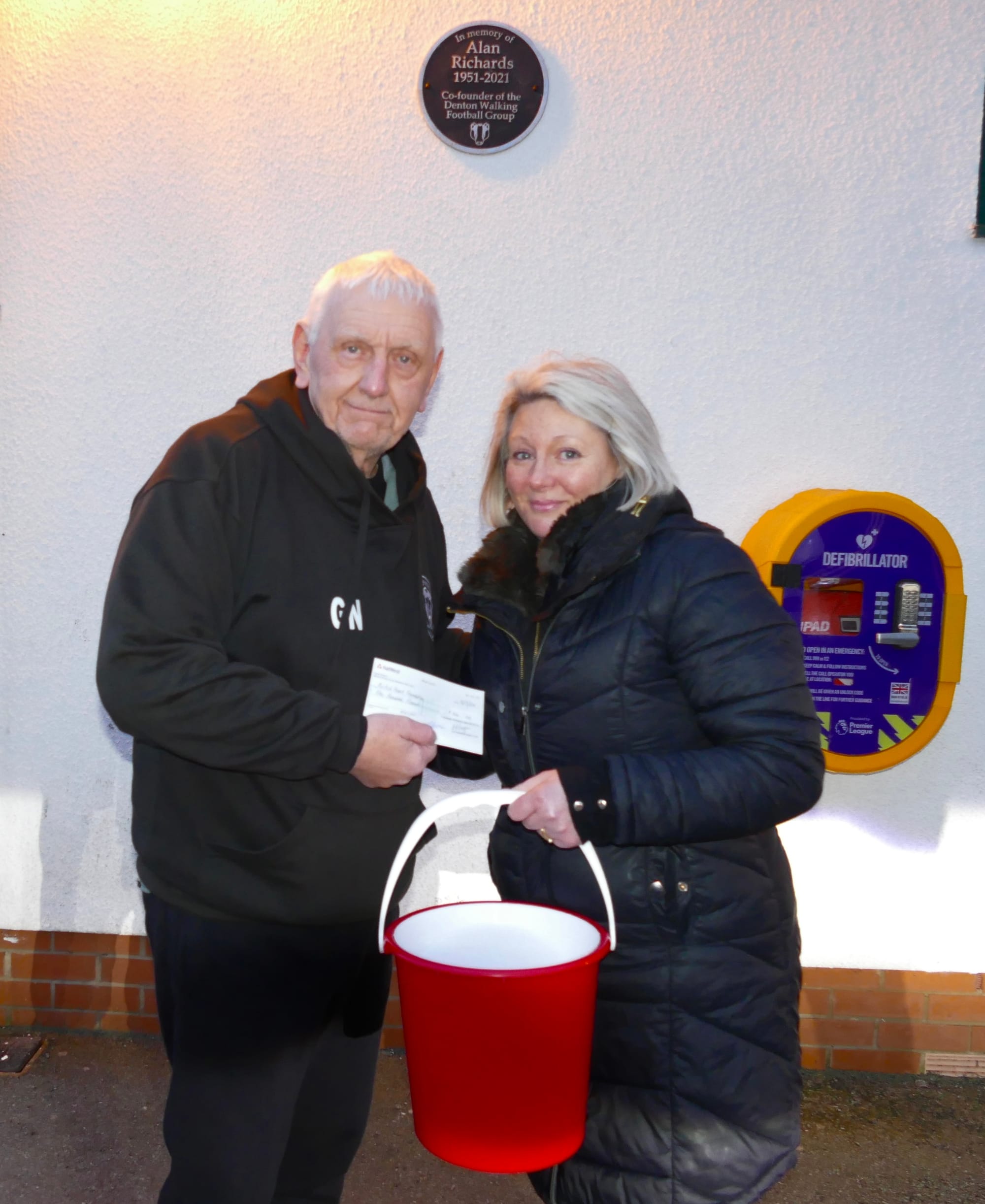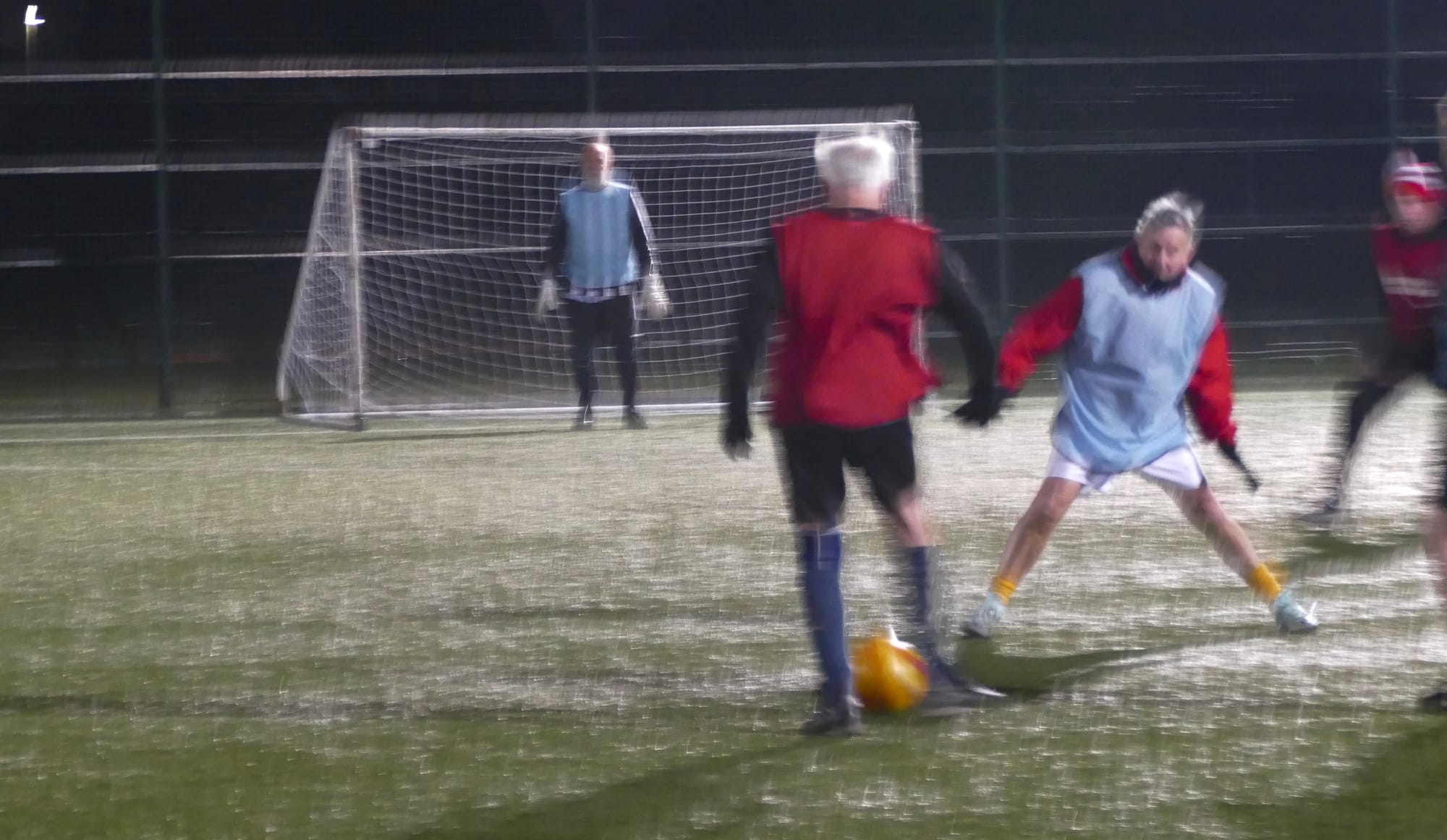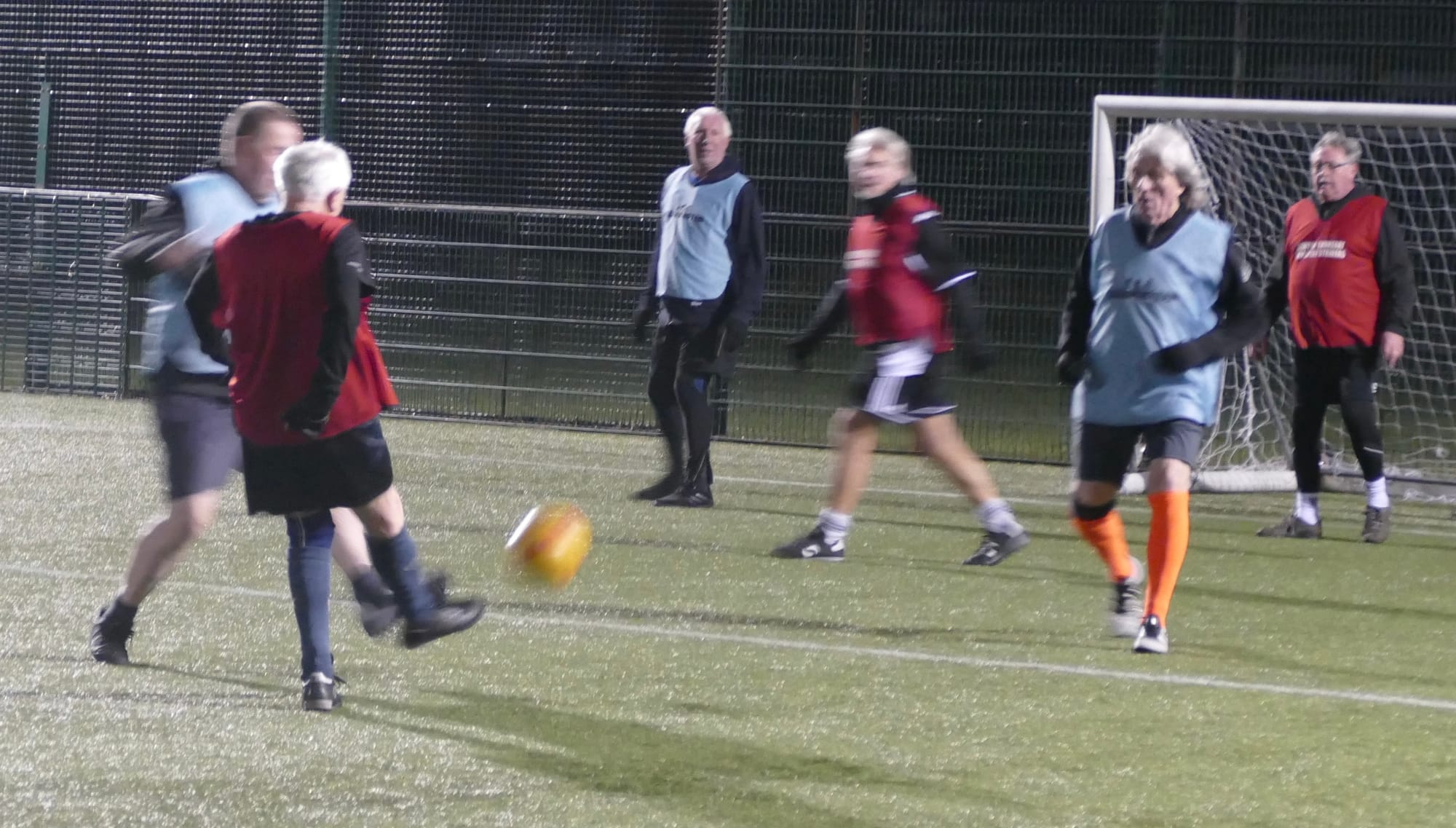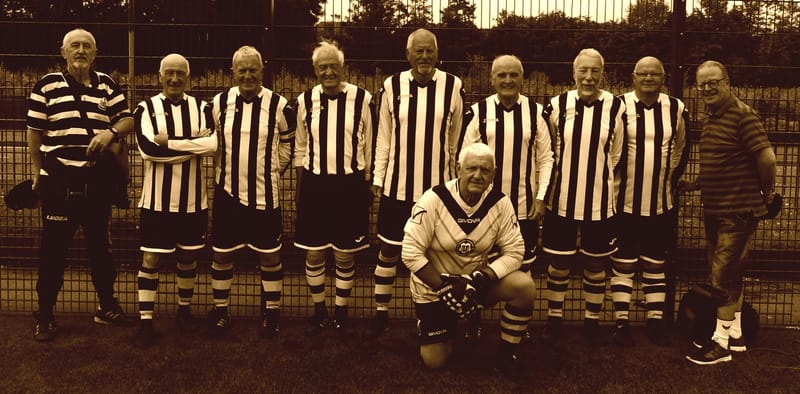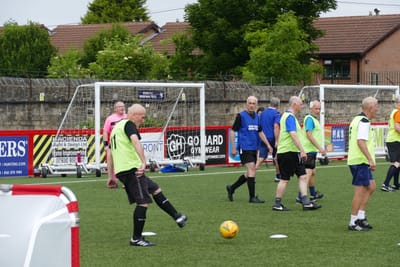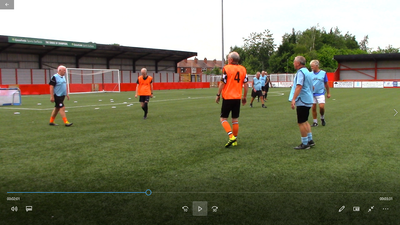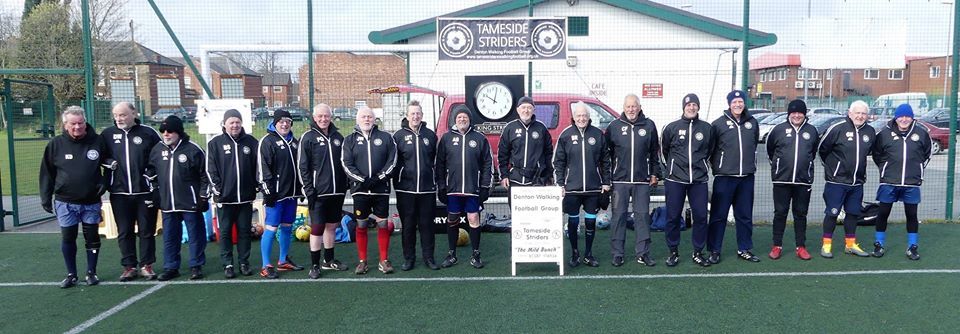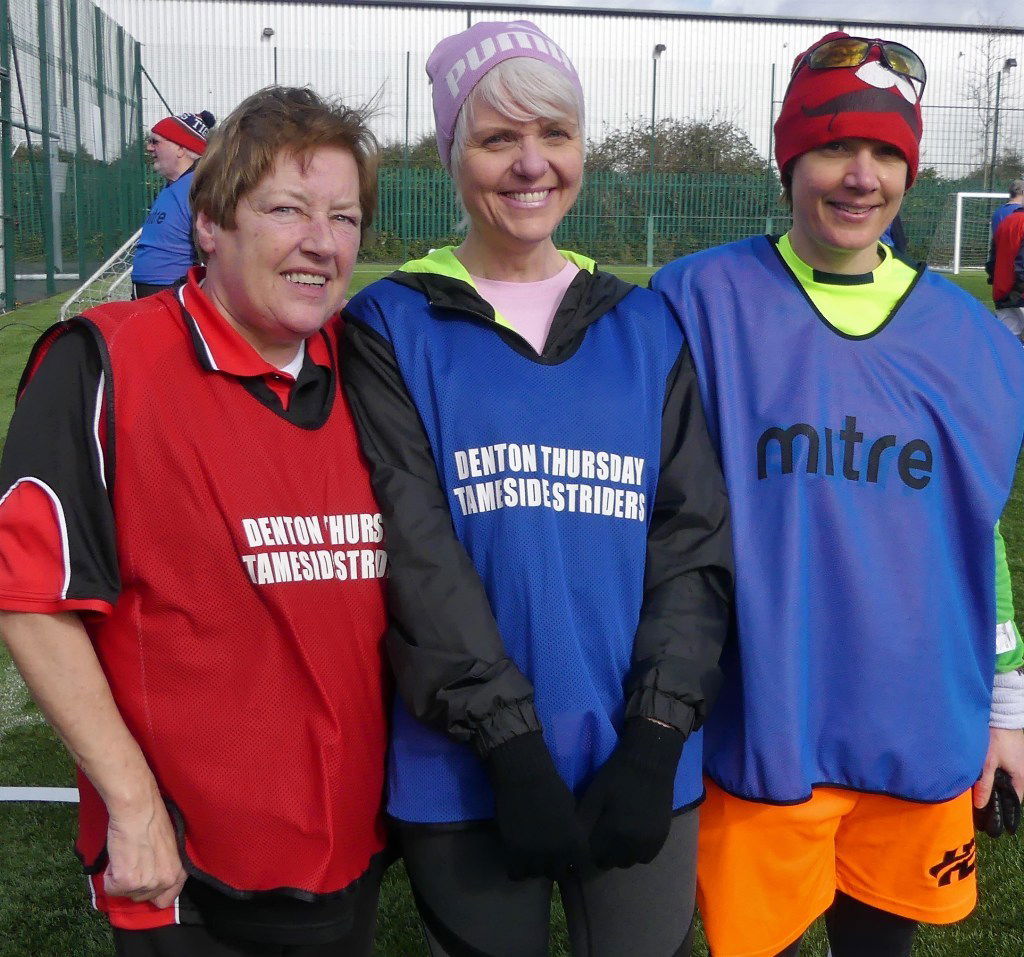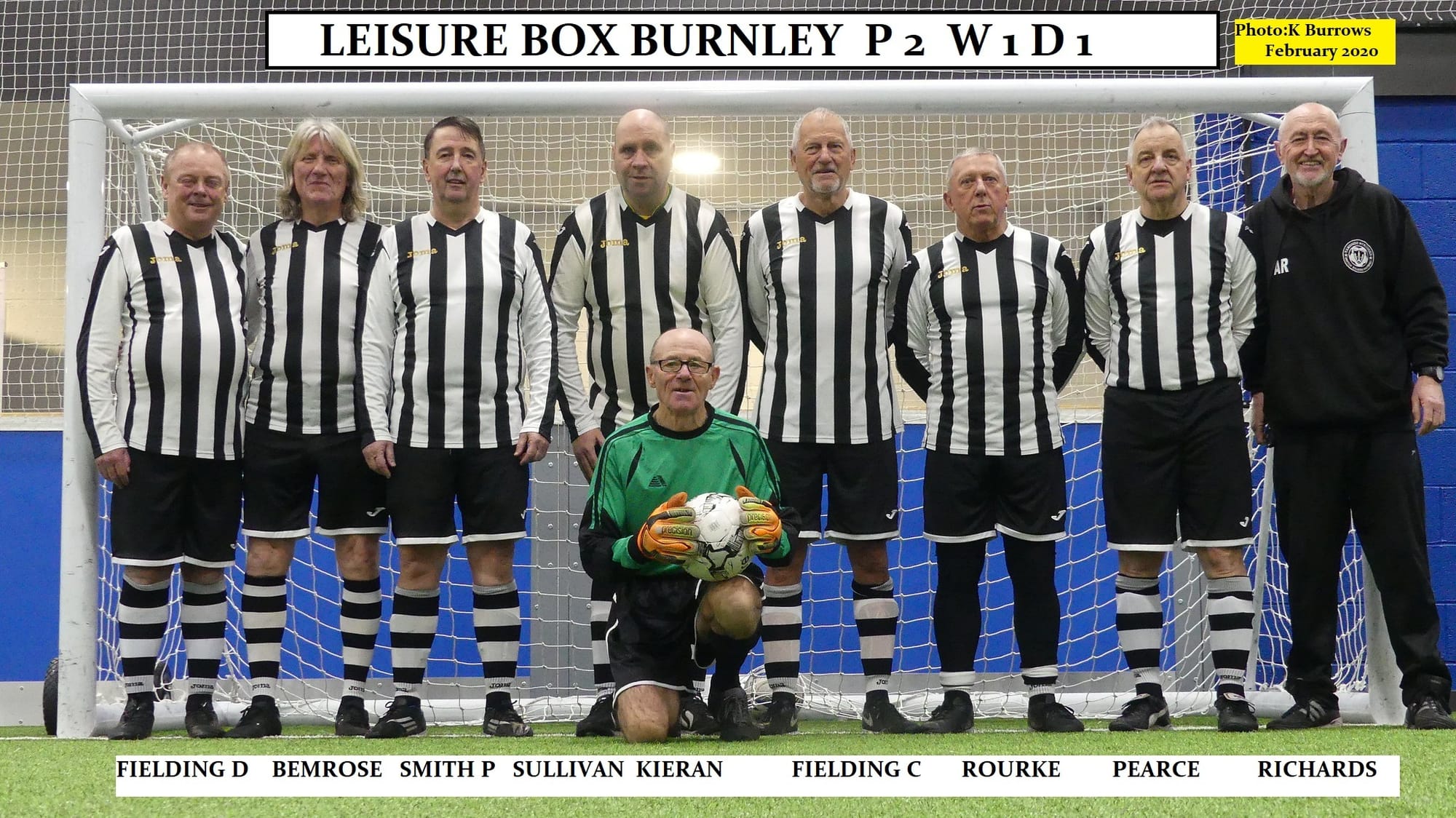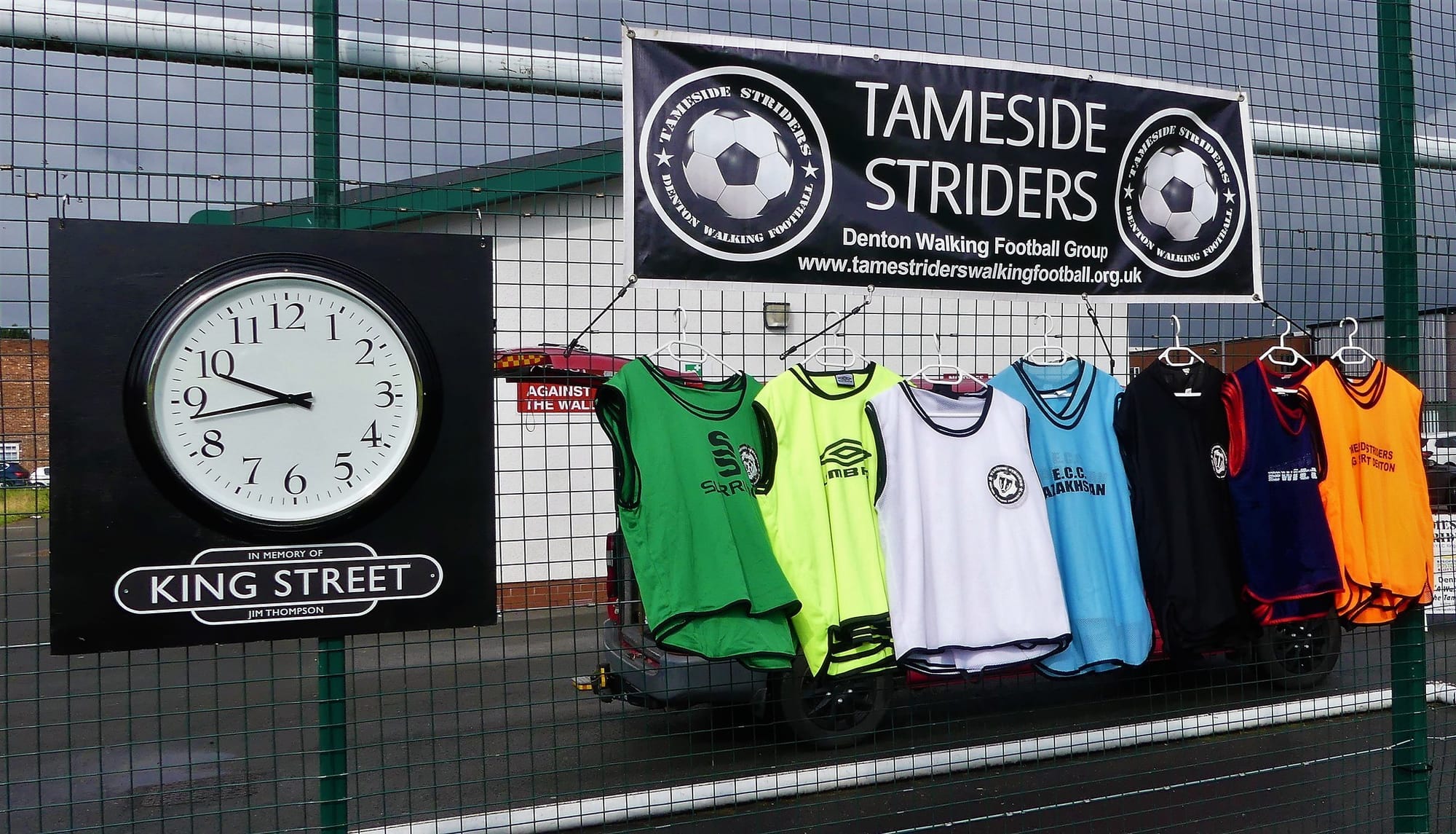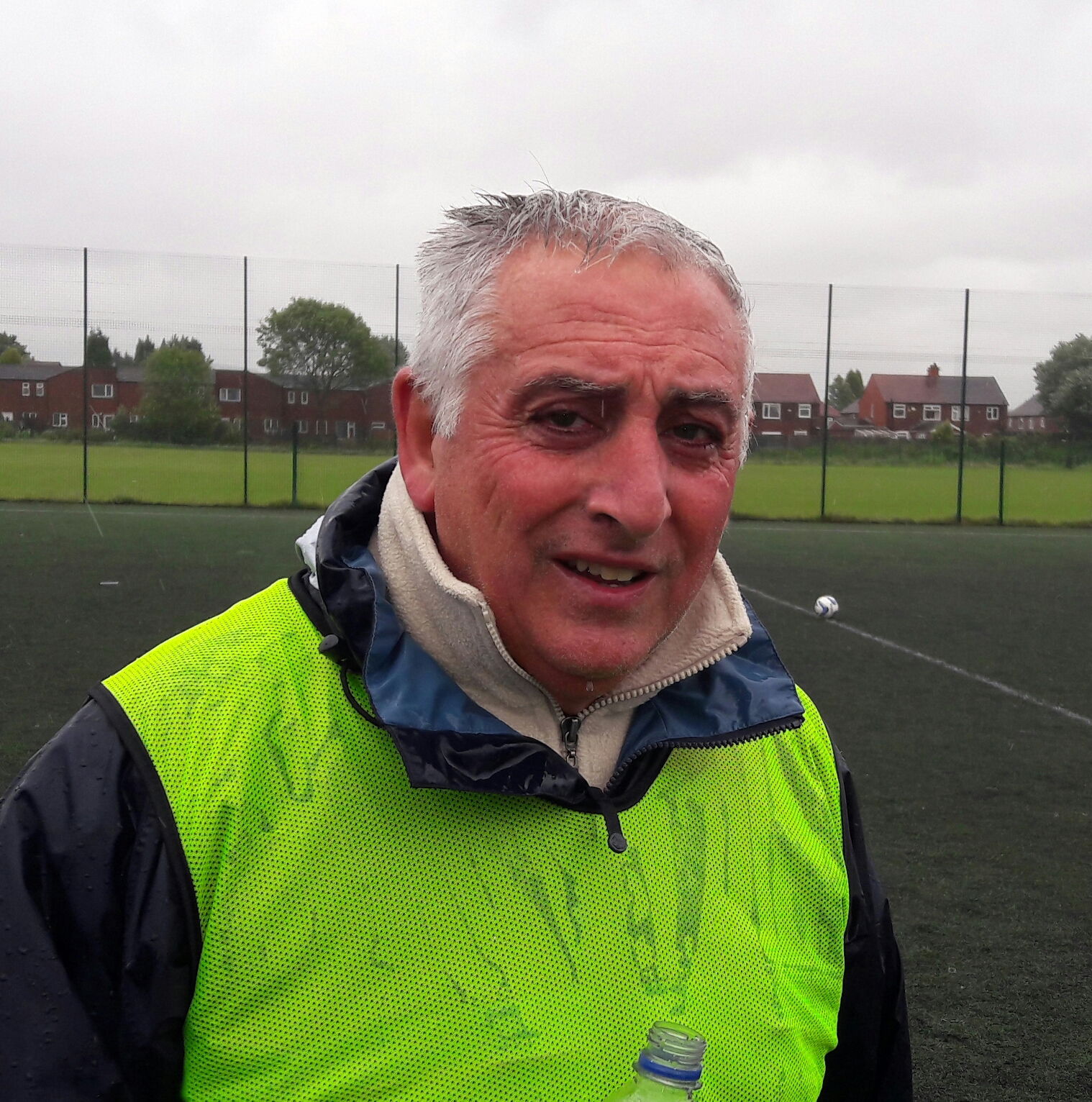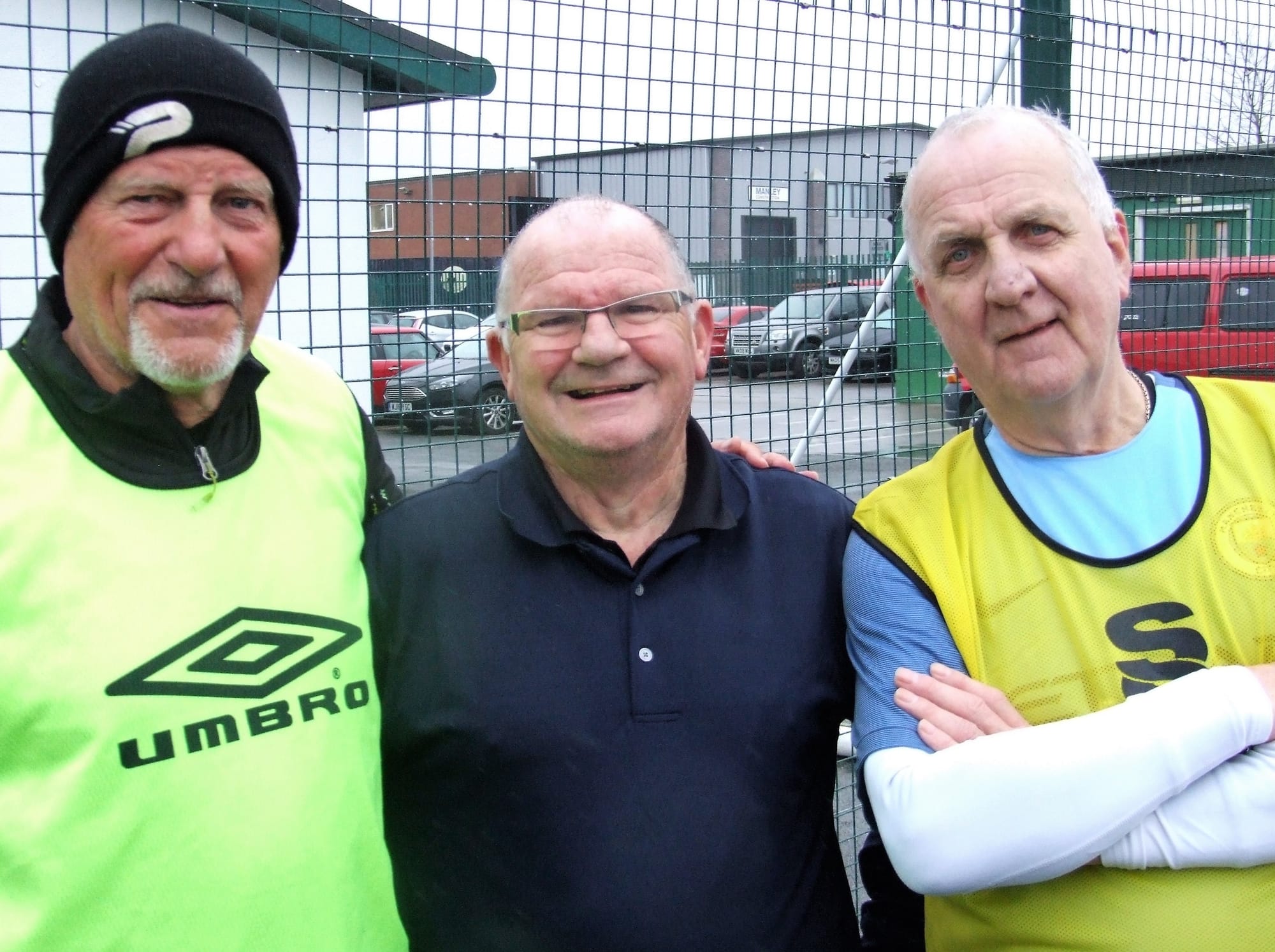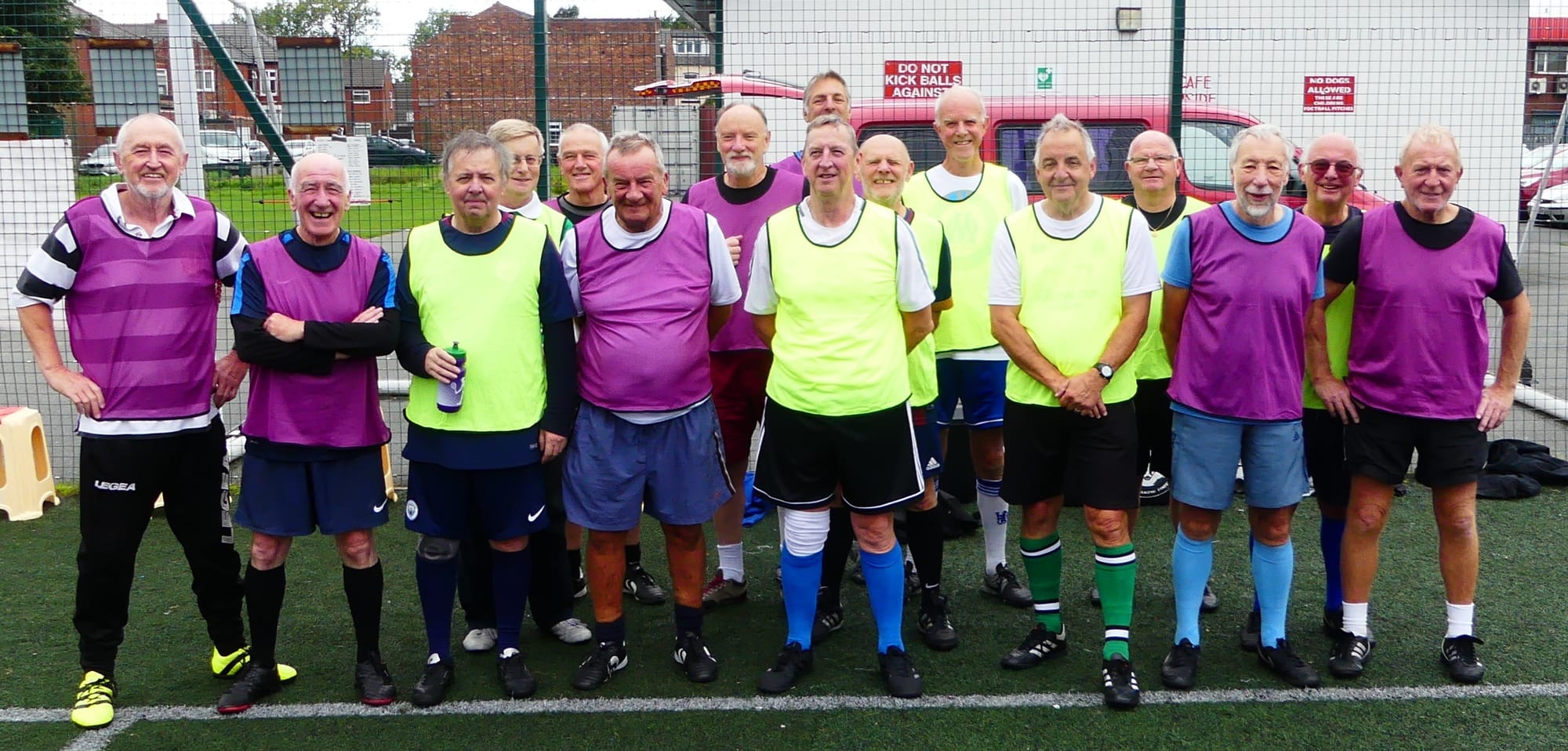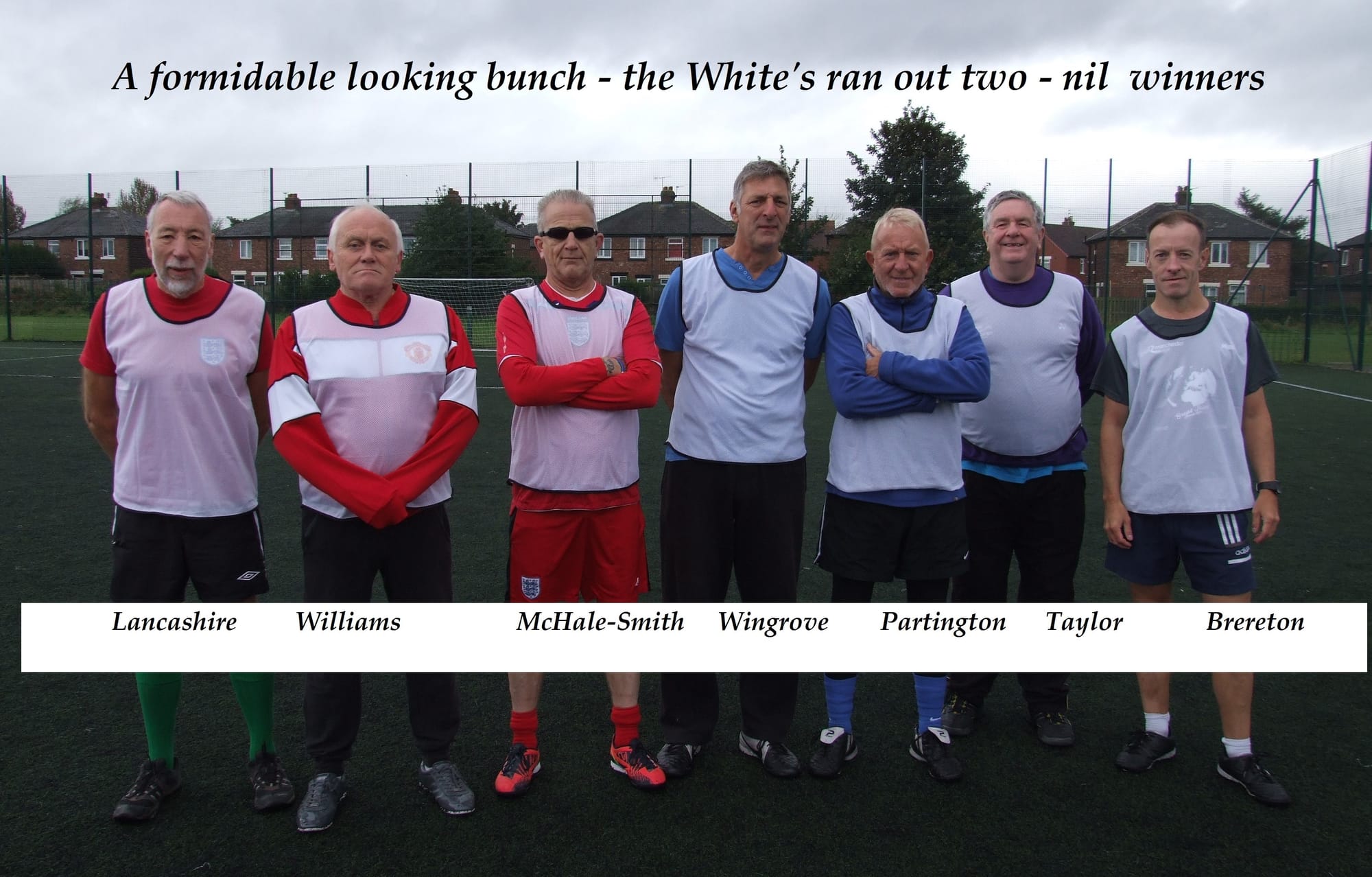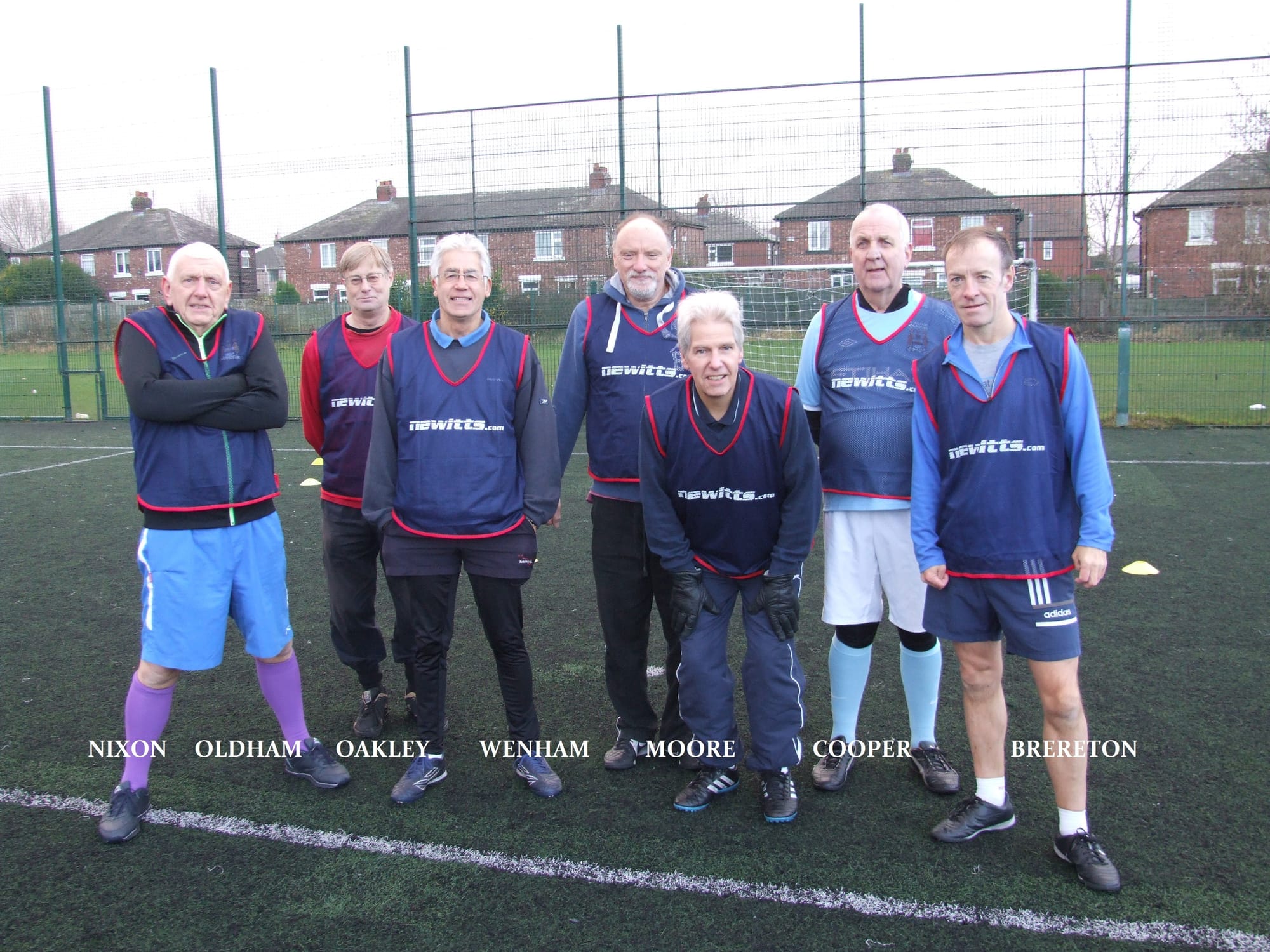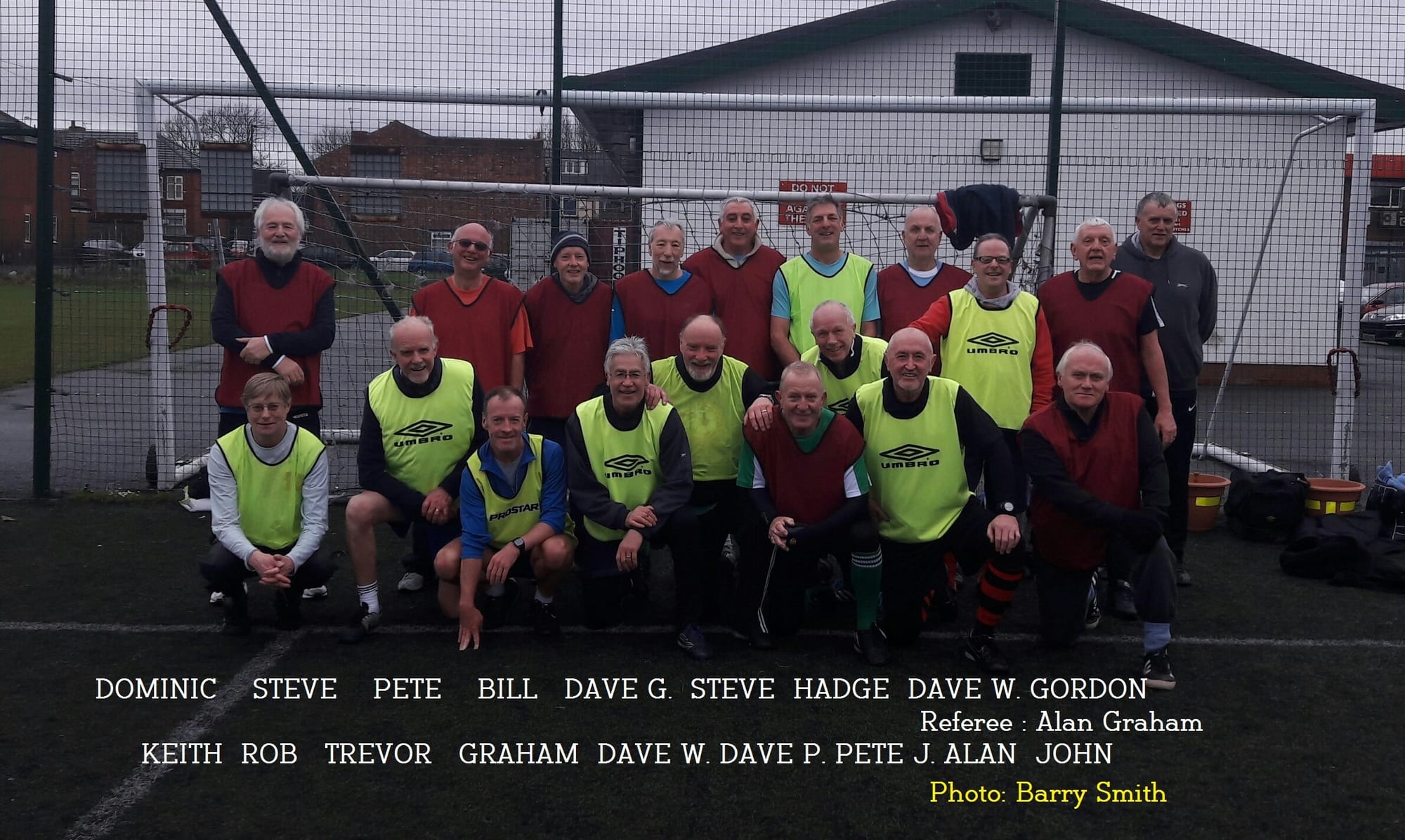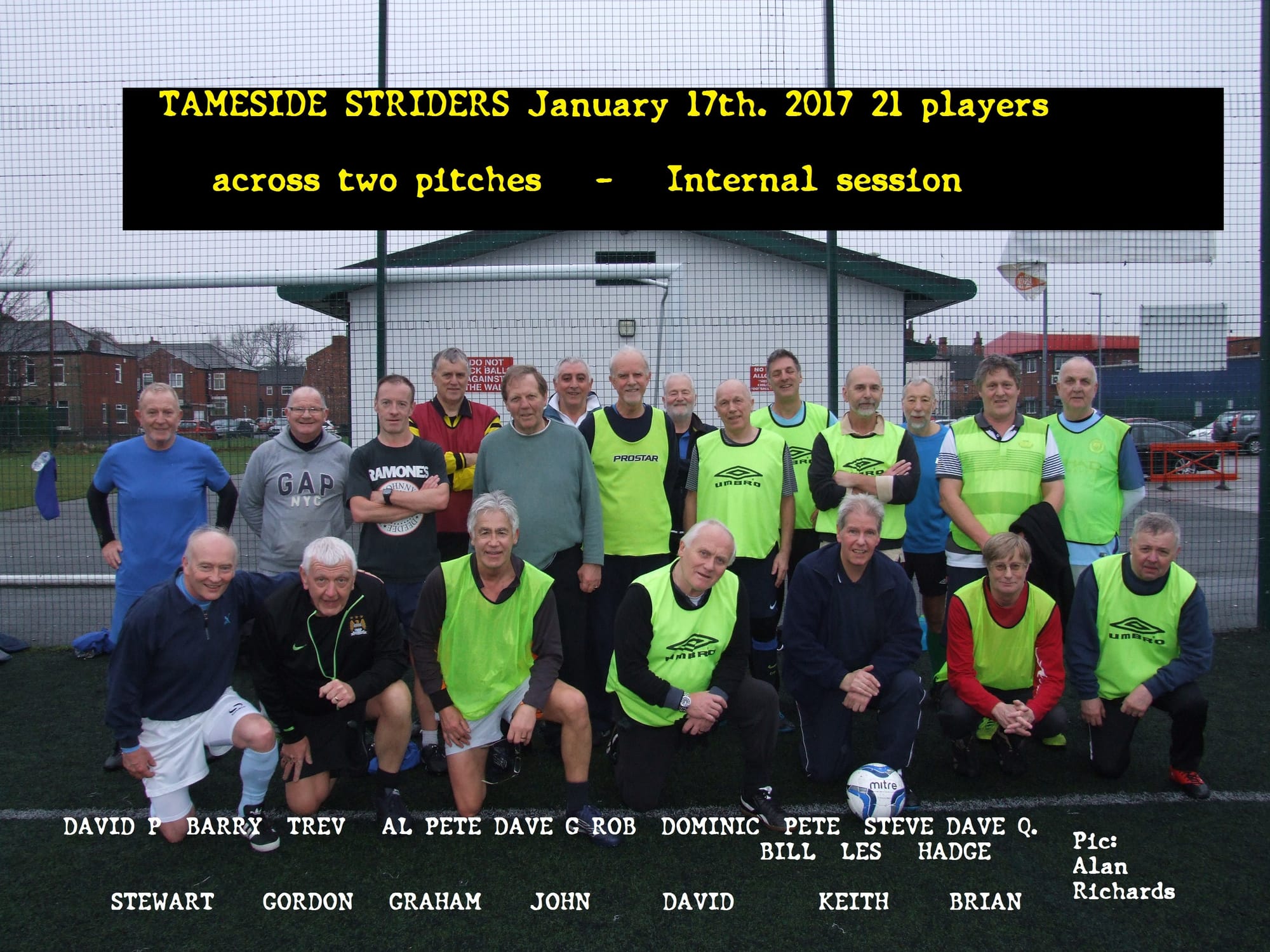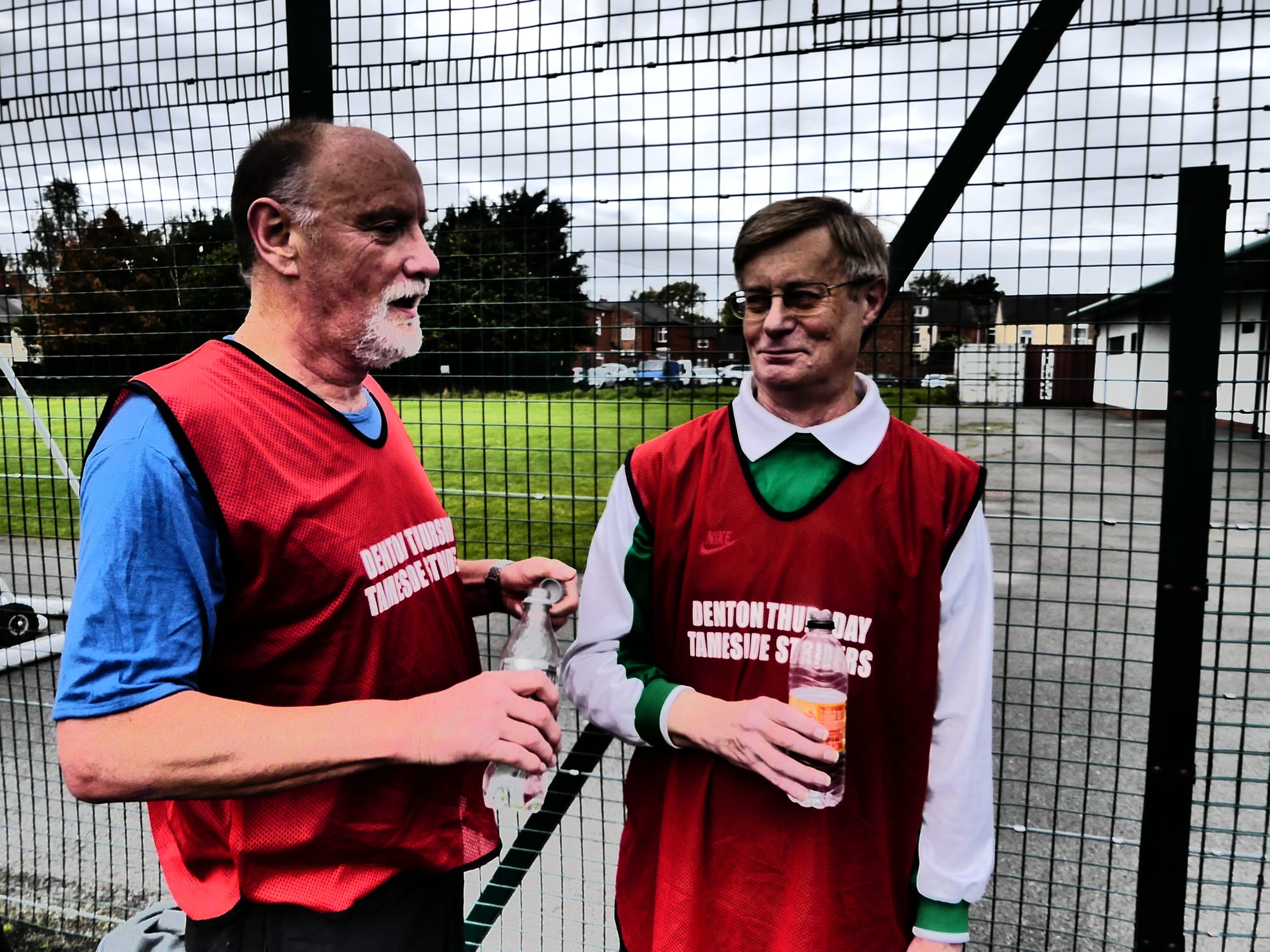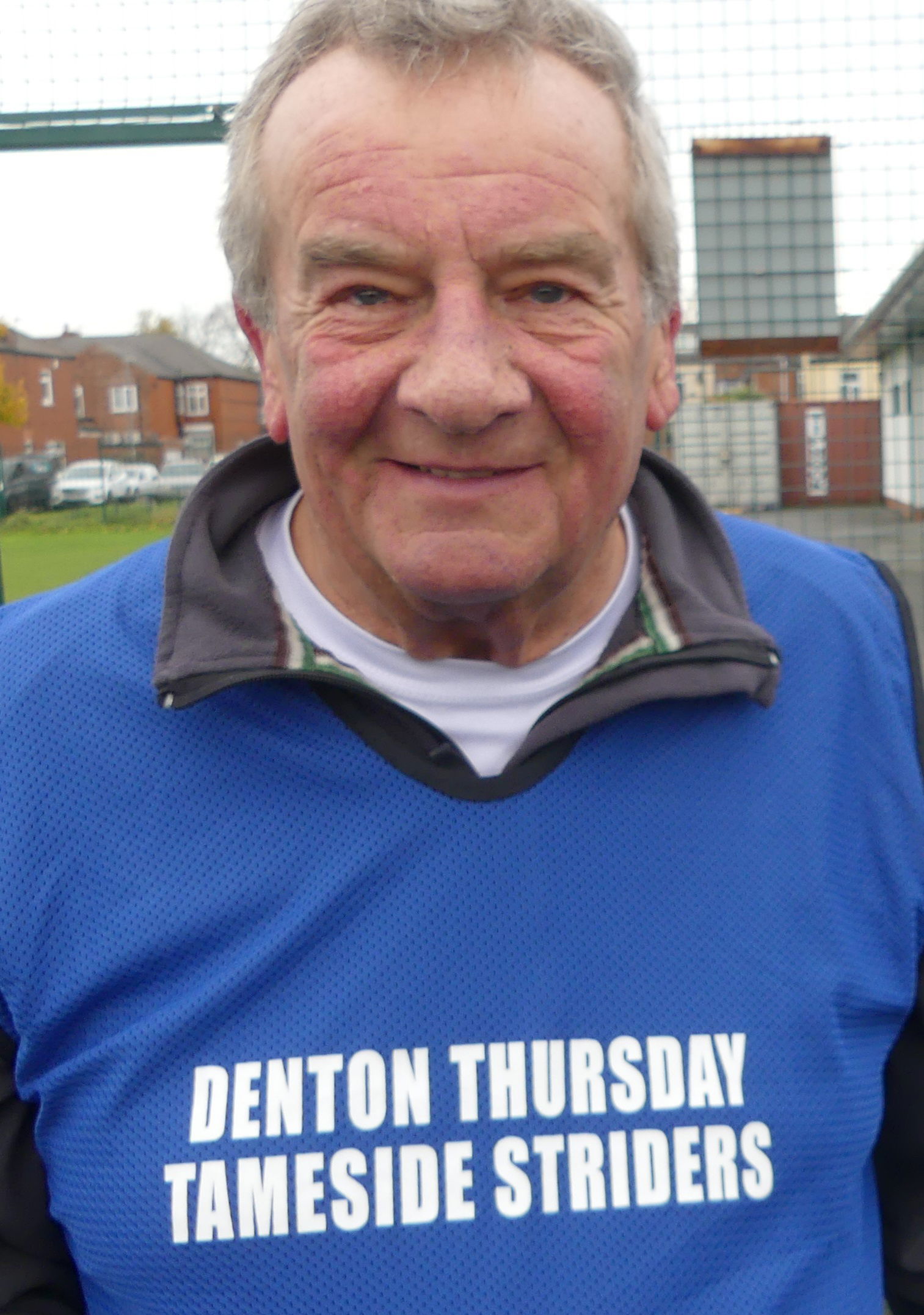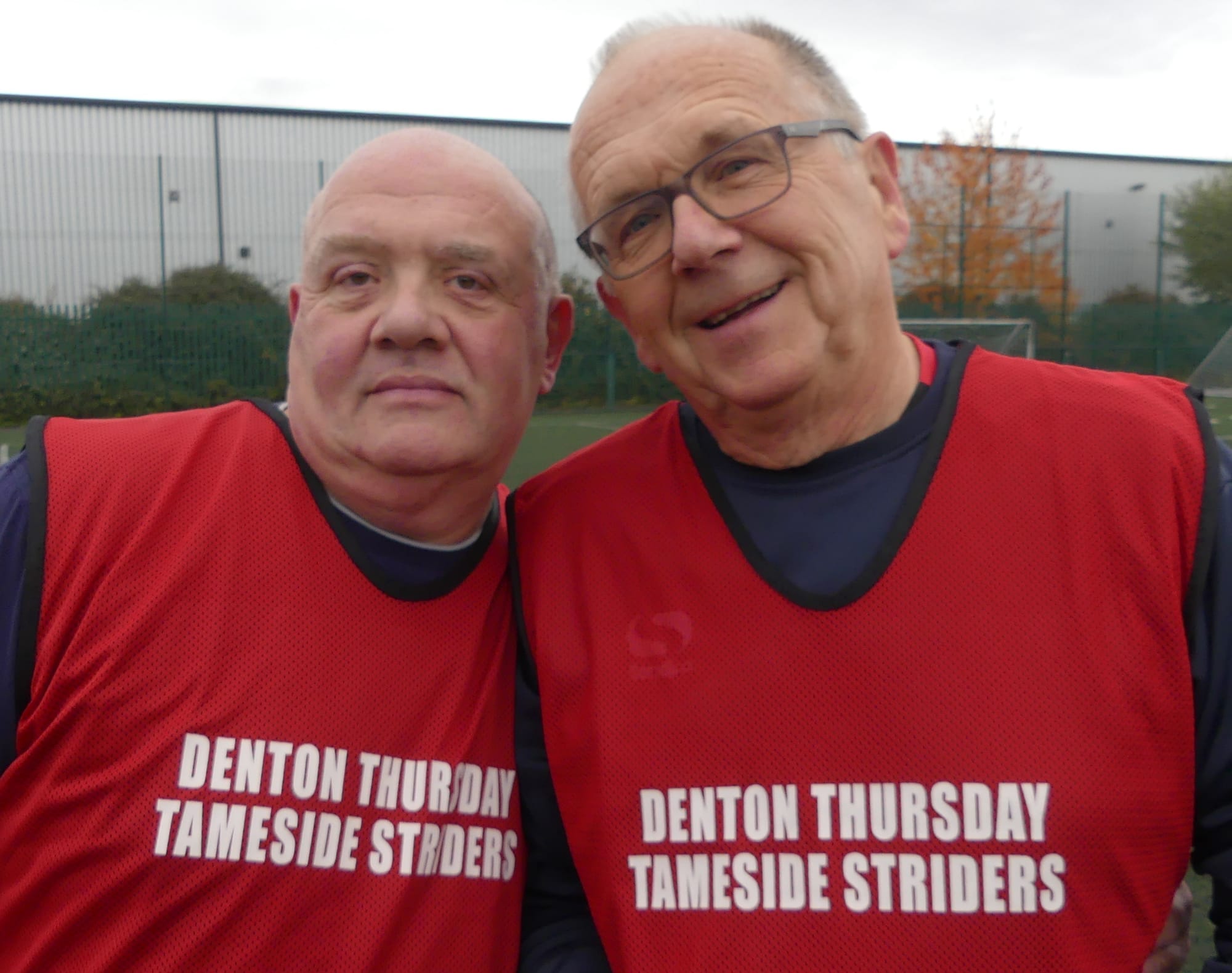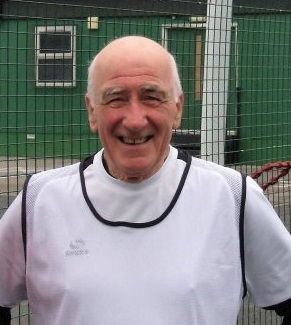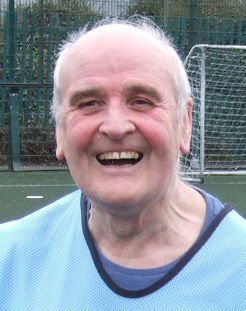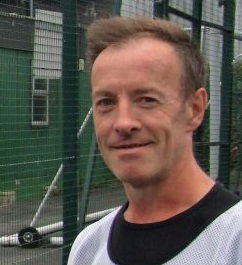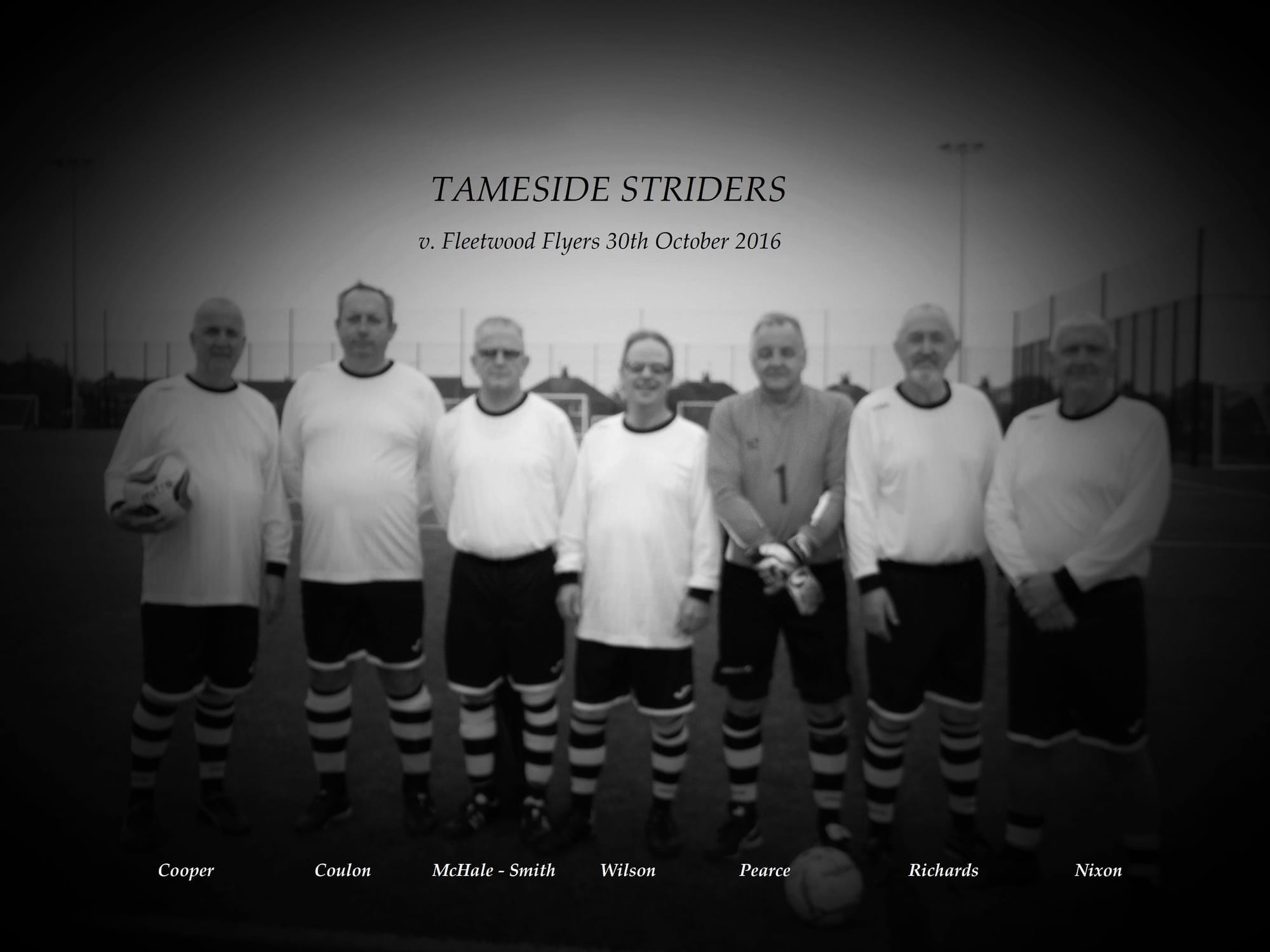get your kicks
Latest News.


To reflect the increase in the average age of the Group and to simplify defining the sessions they have been revised as shown.
This will not affect existing allocation and we have been flexible in accommodating players but should a session be oversubscribed then a non-allocated player will be asked to step down.

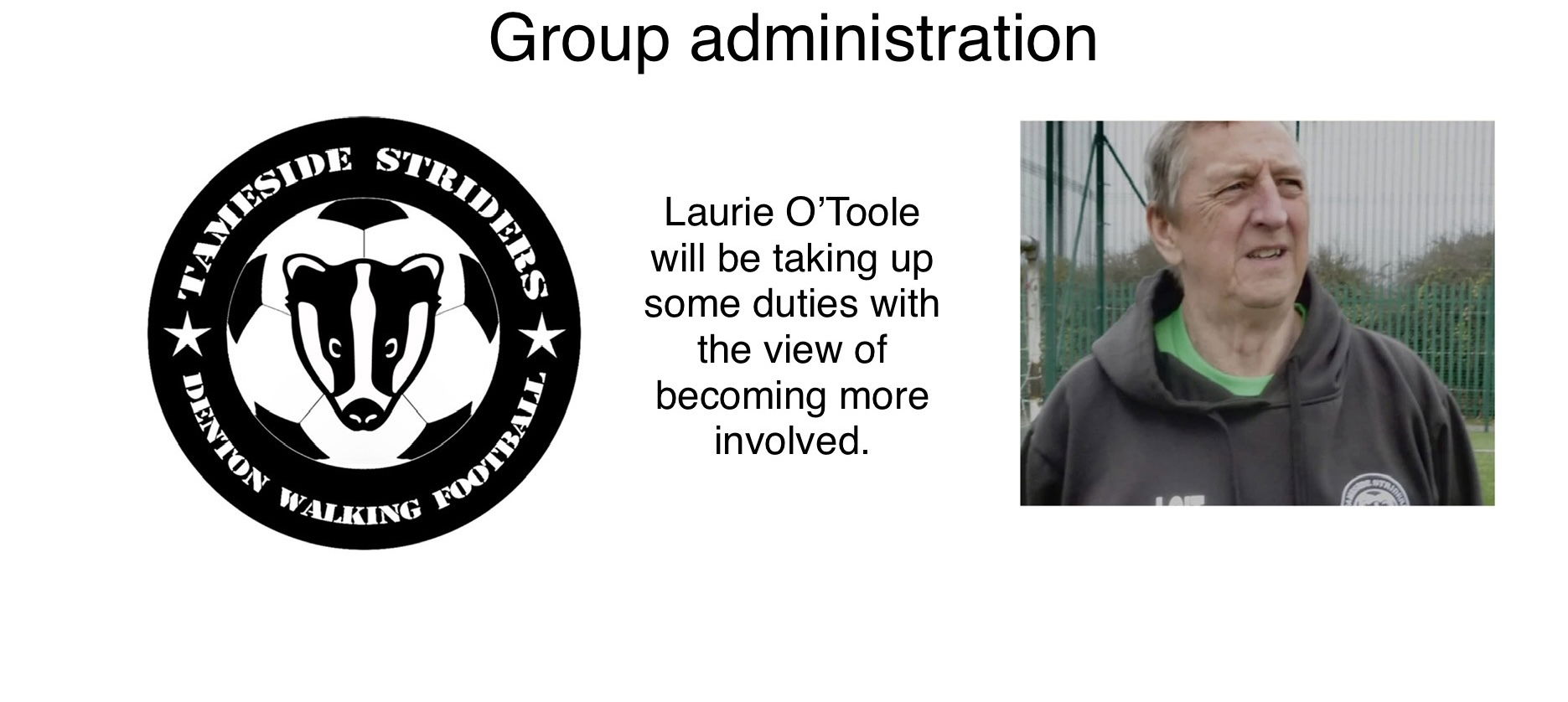
GMWF 2023/4 Leagues

Great achievement wining the GMWF Over 70s Autumn League Division 2 2023.


Tameside Striders " Greens " Over 70s
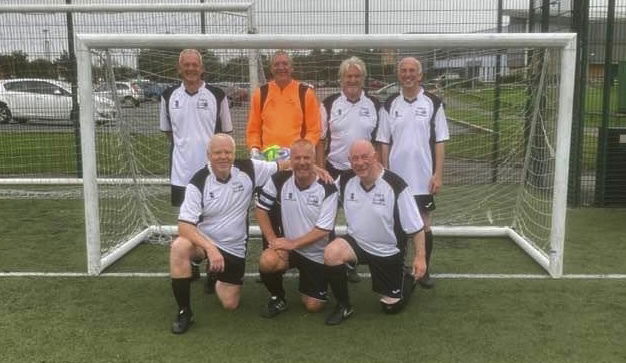
Tameside Striders " Whites " Over 65s.
Who are we?



Tameside Striders is a Walking Football group which meets to play every Tuesday and Thursday throughout the year at Denton Youth F.C. King Street, in Denton.
Also known as Denton Walking Football Group.
THIS IS NOT FOOTBALL but a slower, reduced risk derivative aimed at older players for exercise and enjoyment.
We are carrying forward the walking football initiative facilitated by Age UK Tameside and although our ‘Badgers’ form the competitive element at Over 70 level we’re primarily concerned with internal games. We will play friendly games with other teams from time to time.
The over 70’s team were founder members of the Greater Manchester Walking Football League at Heywood Sports Village.
STOP PRESS: RECRUITMENT NOW LIMTED please check.
_________________________________
We are on our superb synthetic pitch for five hours a week. Tuesday from ten am. it's 'Over 68' hour plus and then from just after eleven am. the 'Unders' get their game. All players are over fifty years of age. Average age is 67. The games are fairly competitive but the ethos of our group is based on enjoyment. Any ego's are left at home and as a mixed ability group we tend to play with smiles on our faces most of the time although foul weather can challenge that. All weather pitch, all weather players. And though results matter, they are not important. We finish with a cup of tea or coffee (outdoors at the moment) and generally put the world to rights.
Men 70 + and 65 + , and women over 45 years of age attend our Thursday session imaginatively called ‘DENTON THURSDAY’ however we try to match abilities and this may result in women attending a different session.
Some sessions are currently playing A.S.K.A.N.C.E. a 'sweeper/keeper and non-contact experience' a novel form of the game using mini goal posts and dispensing with goalkeepers. This is a more technical, precision passing form of walking football and removes some of the power shooting element which a few players prefer. It's great fun for the more proficient player as well as those of lesser ability. Super enjoyment based exercise. An alternative to the conventional walking football format which we have just re-introduced at some sessions following easing of lockdown restrictions.
When new players turn up at our Tuesday & Thursday sessions they must first fill in a routine basic health screening form which is deposited with the Secretary. The form includes emergency contact details and a disclaimer to acknowledge the signee agrees they are playing the game at their own risk.
There can be no exceptions to this rule. Spaces are now extremely limited, it's regretted that new people cannot just turn up and expect to get a game.
_____________
Walking Football has caught on all around the country. We will soon have to introduce a waiting list !
However, if you do want to play with us, do not attend with a highly competitive win-at-all-costs attitude because you’ll soon be found out and advised you’re in the wrong place. As stated we play first and foremost for enjoyment. A non-contact measured game . We do not want anyone going home by way of a Hospital. Remember most of us are knocking on a bit so treat opponents and team mates with respect, and with a duty of care.
We always have a short warm up with stretching and limbering up to get bodies attuned to the demands of walking football which can be quite strenuous. Cameras are often around and there may be a team photo and some action shots too. Sometimes we video our games for the group’s website. Tongue in cheek match reports help reinforce a feeling of camaraderie and belonging. Performances are NOT criticised. You must be prepared for your photograph and name appearing on our website and social media.
– – – – – – –
For internal , weekly games players supply their own shirts, shorts and socks (or jog pants/track suit bottoms etc. – any kind or colour of tee shirt will do. Players are supplied with black and white ‘bibs’ to differentiate between the teams. These are yours to keep, so please bring both bibs to every session you attend. Wear Astro trainers designed for Astroturf. NOT FOOTBALL BOOTS. Astro trainers have ‘pimpled’ soles. They are now compulsory footwear at our sessions.
If we play external games against other clubs then we will provide kit, and laundering. The rules we play to are easy to learn. The main one being – NO RUNNING and Non-Contact. write them and they differ a little to national rules. 99% of games are Refereed, we have several qualified and accredited officials in our group. Additional sweeper/keeper rules can be found on the relevant page on this website - check the menu for 'more'.
– – – – – – – –
RULES IN A NUTSHELL ...
There WILL BE physical contact of course, by the games very nature. In the current circumstances we aim for ZERO contact and that sets a high bar. Not all contact will be adjudged a 'foul'. NO sliding tackles or heavy challenges are allowed. Shoulder charging is ruled out and there is a ban on ALL upper body contact too. No heading the ball. Play is stopped if ALL of the ball goes over head height roughly (6ft.6" for the WHOLE of the ball )Our aim is to reduce the chances of injury to a minimum. So, rediscover the thrill of scoring a goal or making a decisive pass. If you miss playing a team sport, and have not played for years it’s never too late. There is NO upper age limit.Our most senior player is 86! Just arrive with an open mind and don’t take yourself too seriously. Play with a smile on your face and put some fun into your life. We are all of mixed ability – some who can play a bit, some average, and some who might need to sharpen up a little. That can come with practice. All are welcome and the sessions are inclusive. Even the best players make mistakes at Denton (they do everywhere else too).
It has to be stressed once more that we are approaching capacity. So ring Tony at 07502 971116 if you are keen to try the game and he will try to accommodate you.
Group Referees
Referee Garry Pearce
Hyde 2023

The tournament took place at Hyde United Football ground on the 28 June where 5 teams from our members competed on a league basis which was won by the Green Team. An excellent day at a great venue which was enjoyed by all.










Sessions plus

Tuesday sessions
Ages 70 + from 10.00 a.m., then 60 + from 11.00a.m. (with exceptions) Walking football three touch, with a once a month TRIAL of unlimited touches. Sweeper/Keeper is NOT forgotten, and will still be vital to the mix when numbers suit. Ideally smaller sided games rather than too many on the big pitch which is a recipe for running. We can only deal with numbers we are presented with on the day.....playing in a responsible, restrained manner is key to both Tuesday sessions. First and foremost arrive to enjoy yourself.
Learn More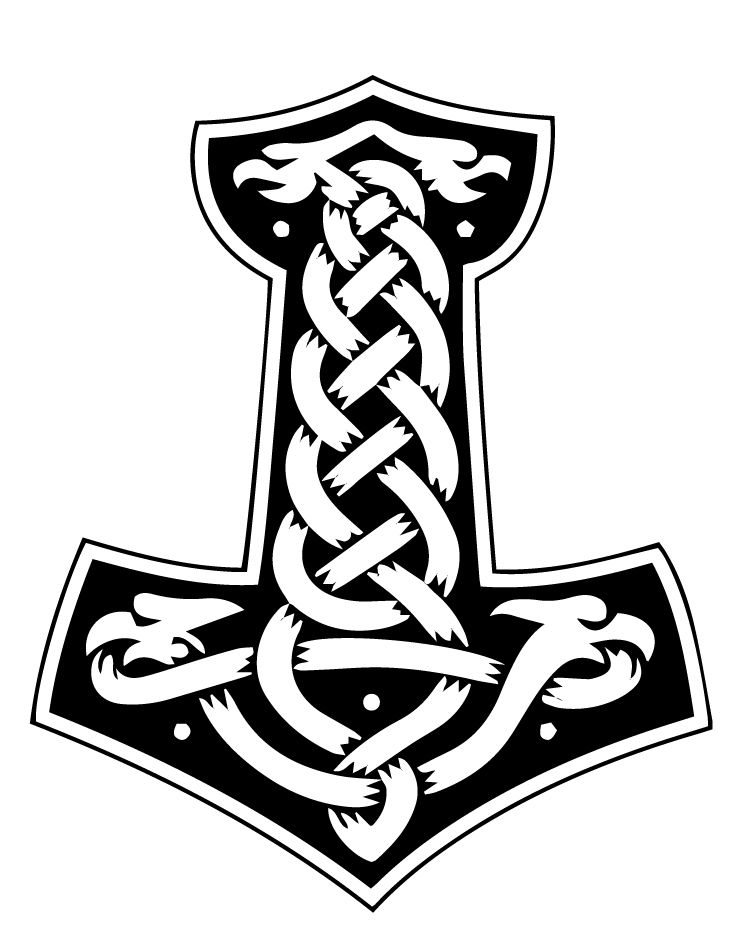
Thursday sessions
Ages 70 + 10am 65 + 11am walking football and/or Sweeper/Keeper. Mixed gender when applicable. Two distinct mixed ability hours with little difference between them. Skill levels have improved across the piece from the very early days and we have recruited some proficient players to augment the mix. Emphasis will always be on playing the game fairly in a restrained manner. Refereed whenever possible.
Learn More
Sessions
New Title
Akaso Action Cam
HEYWOOD '21 Blog
A little trailer made by Tamestriders T.V. for the 2019 season....
Read More...some familiar to the Over 70's League, and some not
Read MoreOverSeventies@Heywood
More Striders action across five years this time with a very 'partisan' but humorous commentary from our ace cameraman Tony Cravagan
Random footage newly updated February 11th 2021 at atmospheric Oakwell and a game against Barnsley Pals
We will feature a different video every couple of weeks - stay tuned
Player Profiles
FITNESS COACH
TIGER FEET 2021
TAMESTRIDERS T.V.



LIGHTS...CAMERA...ACTION
In 2018 the group purchased a Canon camcorder and tripod. Up until then Alan's own equipment had been used quite extensively and all of our videos were hosted on the French site dailymotion.com.
When we also purchased a new 'Acer Aspire' laptop in the same year and up to date editing software - Pinnacle Studio 22 - that was when the video production commenced in earnest and Tamestriders T.V. was born on youtube.
We now have over 350 videos online. Mostly match action from internal games and competitions. There are interviews and other features too. Visits number in the tens of thousands altogether and the channel has been a good return on the above investment of approximately £650.
Along with existing footage on Daily Motion that makes for about 500 different clips of varying length. I think we can confidently say this far outstrips any other walking football organisation, club or group in terms of output. For instance the Walking Football Association who trumpet their video channel often have very little content. Eleven videos - though some are slickly edited . Mainly to cut out scenes of running - we have a 'warts and all' policy.
Others have started their own walking football t.v. channels but have fallen away.
The labour element in editing all of our footage has been given free of charge and voluntarily. Countless hours of work...and waiting for uploads which some won't even think about.
Can you sense a BUT coming ?
Well , you won't get that from me. I really enjoy my hobby of capturing and editing game video. Yes, of course I wish I featured in it more often myself. But of course that requires other hands on the camera and other voices at the microphone. Young Eve may re-appear at some point and we have the gravel voice and common sense commentary of Tony Cravagan sometimes too.
More volunteers would be welcome - you may surprise yourself with a flair for camera work and commentary.
Please keep viewing Tamestriders t.v. because as long as there's demand the output will continue.
If you do watch the channel sometime PLEASE subscribe. It costs absolutely nothing, the more subscribers we get the better. Videos are NOT monetized incidentally and there is no financial reward whatsoever in the video output.
Wish list? A better pro' level camera would be good. A 'high pad' elevating camera platform would be fantasy stuff (££££'s) ...
KEEP WATCHING - KEEP SUBSCRIBING....click the link below
LIGHTS...CAMERA...ACTION
GAME FOOTAGE
Striders@Heywood
Sweeper / Keeper
Read on for details of our technical and precision based game, where power can count for less.
DWFG 'Sweeper Keeper' - an introduction
PLAYED WITH A SIZE FOUR BALL 'SWEEPER / KEEPER is an alternative form of walking football. Rules are devised in the main by Alan Richards and Tony Cravagan. The name of the game came from Colin Fielding. Normal walking football under Manchester County F.A. rules apply in terms of non-contact and not running. Restarts of play (corner kicks the exception here) , indirect free kicks (wait for the whistle) , height restrictions etc. Here at Denton Three team runs equals a penalty etc.
The game reduces the power element replacing it with precision and more awareness of positional play. To remove the urge to shoot for goal with maximum power at every opportunity. Goals may be scored from anywhere on the pitch but not from the defensive 'D' area. By using miniature goals of good quality, there is no need for a goalkeeper – often the most injury prone position on the pitch in the conventional game.
Ideally the format is five versus five or four versus four. Three v three is possible but can be hard work. Pitch sizes should be reduced accordingly. Higher numbers are possible, and can be enjoyable with extended pitches. Our maximum at King Street is eight versus eight. Flexibility is determined by the available space.
A slightly abridged copy of the updated rules below will soon be made available to every player.
10. Three running offences from a team will result in the award of a penalty to the opposition.
________
Summing up Sweeper /Keeper….
A more technical game than regular walking football especially suited to older players and younger ones seeking to improve their passing skills. Players must seek to find a channel to goal which they can take advantage of. Inter passing movement can open up these channels leaving the mini goals vulnerable to an attempted strike. Players can shoot, but the level of accuracy required from distance usually favours a stroked ball . A medium to long range 'passing shot'.
There is no restriction on where the ball is struck from and if a channel is seen from much further back then a more powerful ‘shot’ will be needed and these can succeed with some spectacular results.
The intention of the game is to improve passing precision and movement. There seems to be much fewer cases of running and contact has been low. Scoreline’s are often close. Some players master the 'SK' role very quickly and perform it well. Making chances hard to come by and posing a creative challenge for attackers.
This game is every bit as demanding on the players and offers levels of exercise that compare well with the normal game.

Picture above comes from our 'Summer 19' festival played to this format which was a rip-roaring success.
You can add a three touch element if desired which makes the game even more inclusive. At the moment we are playing three touch post lockdown.
In conclusion:
The satisfaction of striking a shot very firmly and seeing rocket into the net is equalled by the precision placement of a stroked ball from distance finding the target.
Note: Mini goals vary in price. We are lucky and have two sets of the expensive folding ‘SAMBA’ type thanks to various grants we have been awarded over our time as a group. Taking advantage of them in this way was always envisaged. It’s appreciated that regular Goalkeepers will not much like this format BUT the custodian role is specialist and there are few people willing to do it on a regular basis, much fewer who are very good at it. Our group has several ‘keepers who are, but it is hoped they will join in the fun of ‘sweeper/keeper’ when they get the chance to do so.
Manchester F.A. Rules
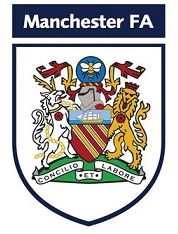
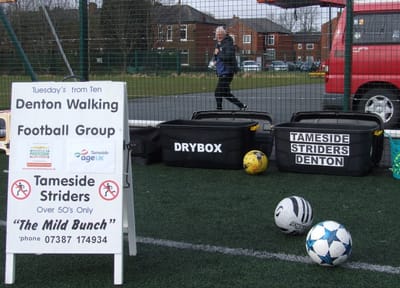
Walking football is not Association Football.
Local rules are best decided locally and probably always will be. For us, the aim of the rule making game is to produce a reduced risk environment for the older player, once more taking part in a recognisable form of the game we all love.
MANCHESTER F.A.
'WALKING FOOTBALL'
RULES 2018
Manchester County F.A. Approved local WALKING FOOTBALL rules as tutored to candidates for Manchester County F.A. Walking Football Referees 15th & 19th Jan. 2018
Law 1
The field of play
General Principle Where not stated, the normal IFAB Laws of Association Football apply with exceptions notably that there is no offside in Walking Football.
The Pitch
Walking Football may be played with or without barriers. Dimensions: The playing area must be rectangular. The length of the touchline must be greater than the length of the goal line.
For 5 and 6-a-side football the following dimensions are recommended
Length: minimum 25m maximum 50m Width: minimum 16m maximum 35m
For 7-a-side football the following dimensions are recommended
Length: minimum 50m maximum 60m Width; minimum 30m maximum 40m
Area Markings
The playing area is marked with lines. The two longer boundary lines are called touchlines. The two shorter lines are called goal lines. All lines are 8cm wide.
The playing area is (ideally) divided into two halves by the halfway line. The centre mark is indicated at the midpoint of the halfway line.
A penalty area is defined at each end of the pitch as follows:
A semi-circle of 6m radius shall be drawn from the centre of each goal line. The extremities of these semi-circles should reach the goal line, barrier or wall regardless of whether the goal posts encroach onto the playing area.
Penalty Mark
A penalty mark is drawn 1m from the midpoint between the goal posts and equidistant from them. Hence penalty kicks are taken from One metre outside the 'D' at the mid-point. Effectively meaning penalty kicks are taken from a 7 metre distance
Where barriers do not surround the playing area a quarter circle with a radius of 25cm from each corner is drawn inside the playing area.
ALL pitch markings are of course controlled by local conditions and may be adapted to suit the facility being used.
Goals
Goals must be placed on the centre of each goal line.
They consist of two upright posts equidistant from each corner and joined at the top by a horizontal crossbar.
The distance (inside measurement) between the posts is maximum 5m, minimum 3m and the distance from the lower edge of the crossbar to the ground is maximum 2m minimum 1.20m.
Both goal posts and the crossbar have the same width and depth of 8cm. Nets, made of hemp, jute or nylon, are attached to the posts and crossbars behind the goals. The lower part is supported by curved bars or some other adequate support.
Safety
The goals may be portable, but they should meet British Standards and be anchored securely to the ground when necessary during play as per Health and Safety requirements.
When playing to lines, a suitable run-off should be provided around the pitch (the FA recommends a minimum of 3m if possible. If this distance cannot be met, a suitable run-off should be provided subject to a risk assessment).
Playing Surface Where natural turf is not used, the surface must be smooth and flat and non-abrasive. The use of wood or artificial material is recommended.
Law 2
The Ball
The ball is:
• spherical
• made of leather or other suitable material
• size appropriate to the group
Replacement of a Defective Ball If the ball bursts or becomes defective during a game:
• the game is stopped
• the game is restarted by dropping the replacement ball at the place where the first ball became defective
If the ball bursts or becomes defective while not in play:
• the game is restarted according to the Laws
The ball may not be changed during the match without the permission of the referee.
Law 3
The players
A match is played by two teams, each consisting of not more than the following number of players and substitutes for each format:
5-a-side = 5 players per team and 3 substitutes (total of 8 players)
6-a-side = 6 players per team and 3 substitutes (total of 9 players)
7-a-side = 7 players per team and 3 substitutes (total of 10 players)
Substitution Procedure
The maximum number of substitutes permitted is three.
The number of substitutions made during a game is unlimited. A player who has been replaced may return to the pitch as a substitute for another player.
Substitutions should take place when play is stopped or during play if the second official is involved in refereeing the game. This will be determined by the Competition Rules.
A substitution is made when the ball is in or out of play, for which the following conditions must be observed:
• the player entering the playing area may not do so until the player leaving the playing area has passed completely over the boundary line
• where barricades are used, the players must use the opening onto the playing area
• a substitution is complete when the substitute enters the playing area from which moment the substitute becomes a player and the player who is replaced ceases to be a player
A substitute is subject to the authority and jurisdiction of the referee, whether called upon to play or not. Changing the Goalkeeper Any of the players or substitutes, may change places with the goalkeeper. The following conditions must be observed:
• the referee must be informed before the change is made
• the change may only be made during a stoppage in play
• the replacement goalkeeper must wear a jersey which distinguishes them from all other players and the referee Infringements/Sanctions If, while a substitution is being made, a substitute enters the playing area before the player being replaced has completely left:
• play is stopped
• the player being replaced is instructed to leave the playing area
• the substitute is ‘sin binned’ for the agreed period
• play is restarted by an indirect free kick to be taken by the opposing team from the place where the ball was situated when the game was stopped However, if the ball was inside the penalty area, the indirect free kick is taken 3m from the penalty area line, at the place nearest to the position of the ball when play was stopped
Where barricades are used; if, while a substitution is being made, a substitute enters the playing area, or a player being replaced leaves it from a place other than the recognised opening in the barricades:
• play is stopped
• the substitute is ‘sin binned’ for the agreed period
• play is restarted by an indirect free kick to be taken by the opposing team from the place where the ball was situated when the game was stopped. However, if the ball was inside the penalty area, the indirect free kick is taken 3m from the penalty area line, at the place nearest to the position of the ball when play was stopped
Validity of a Match – Playing Numbers A match should not be considered valid if the playing strength of either team is permanently reduced by:
• more than two players for 5–a-side
• more than two players for 6-a-side
• more than three players for 7–a-side
However, this should only apply when players are permanently excluded or lost through injury rather than within the ‘sin bin’ for a two-minute suspension.
Law 4
The players equipment
Safety
A player must not use equipment or wear anything that is dangerous to themselves or another player, including any kind of jewellery. Jewellery must be removed.
Basic Equipment
The basic compulsory equipment of a player is:
• a jersey or shirt
• shorts or track suit trousers
• socks
• shin guards
Shin guards
• are covered entirely by the socks
• are made of a suitable material (rubber, plastic or similar material)
• provide a reasonable degree of protection
Goalkeepers
• the goalkeeper is permitted to wear long trousers
• each goalkeeper wears colours which easily distinguish them from the other players and the referees
Infringements/Sanctions For any Infringements of this Law:
• the player at fault is instructed by the referee to leave the playing area to correct their equipment or to obtain any missing item of equipment. The player may not return to the playing area without first reporting to the referee, who then checks that the player’s equipment is correct. The player is only allowed to re-enter the playing area when the ball is out of play
• players can return to play whilst the ball is in play if a second official has checked the equipment.
If no second official is present, the player must wait for play to stop in order for the referee to check the faulty equipment
Law 5
The Referee
The Authority of the Referee Each game is controlled by a referee who has full authority to enforce the Laws of the Game in connection with the game to which they have been appointed, from the moment they enter the locality where the playing area is situated until they leave.
Powers and Duties
The Referee:
• enforces the Laws of the Game
• allows play to continue when the team against which an offence has been committed will benefit from such an advantage, and penalises the original offence if the anticipated advantage does not ensue at that time
• keeps a record of the match and provides the appropriate authorities with a game report which includes information on any disciplinary action taken against players and/or team officials and any other incidents which occur before, during or after the game
• acts as timekeeper
• stops, suspends or terminates the game for any infringement of the Laws or due to any kind of outside interference
• takes disciplinary action against players guilty of cautionable, ‘sin bin’ and sending-off offences
• takes action against team officials who fail to conduct themselves in a responsible manner and may, at their discretion, expel them from the playing area and its immediate surrounds
• ensures that no unauthorised persons enter the playing area
• stops the game if, in their opinion, upon injury assessment a player is seriously injured and ensures that they are removed from the playing area
• ensures any player bleeding from a wound leaves the playing area
• allows play to continue until there is a stoppage in play if a player is, in their opinion, only slightly injured
• ensures that any ball used meets the requirements of Law 2
• make use of timed suspensions to exclude temporarily players guilty of infringements of the Laws
• in the absence of a second official, the referee should make excluded players aware of the end of their period of suspension Decisions of the Referee The decisions of the referee regarding facts connected with play are final.
Law 6
The Match Official
Duties
The duties of the Match Official are to assist the referee in the control of the game in the following areas:
• control of the substitution procedure, ensuring that the player to be replaced has left the playing area before the substitute is allowed to enter the playing area
• check the equipment of all the substitutes entering the playing area
• ensure that a player sent from the playing area by the referee, to replace any missing or defective equipment, is checked before being allowed back on to the playing area
• if a player has been removed from the playing area by the referee to have a ‘blood injury’ treated, the match official must ensure that the bleeding has stopped before the player is allowed to re-enter the playing area
• keep a full record of the game details
• act as the timekeeper for any player who has been given a temporary suspension from the game • report to the referee any misconduct by any of the team players or officials in the technical / bench / substitute area
• carry out any other duties as requested by the referee
Law 7
The duration of the match
The duration of the match shall be divided between two and four equal periods of over 5 and up to 30 minutes each, subject to the following:
• allowance shall be made in either period for time lost through stoppages as decided by the referee
• the duration of any period shall be extended to enable a penalty kick to be taken
• between periods the interval shall not exceed five minutes, except by consent of the Referee
• competition rules may allow for a game to be played in its entirety without any interval or requirement to change ends
For games ending in a draw, competition rules may state provisions involving extra time or other procedures approved by the International FA Board to determine the winner of the game.
Law 8
The start and restart of play
Preliminaries
The choice of ends is decided by the toss of a coin. The team winning the toss decides which goal it wishes to attack in the first period of the game.
The other team takes the kick-off to start the game. Kick-off A kick-off is a way of starting or restarting play:
• at the start of the game
• after a goal has been scored
• at the start of any period of the game • at the start of each period of extra time, where applicable
Note: A goal may NOT be scored directly from the kick-off.
Procedure
• all players are in their own half of the playing area
• the opponents of the team taking the kick-off are at least 3m from the ball until it is in play
• the ball is stationary on the centre mark
• the referee gives a signal
• the ball is in play when it is kicked and moves in any direction
• the kicker may not touch the ball a second time until it has touched another player
After a team scores a goal, the other team takes the kick-off.
Infringements/Sanctions
If the kicker touches the ball for a second time before it has been touched by another player:
• an indirect free kick is awarded to the opposing team to be taken from the place where the infringement occurred.
For any other infringement of the kick-off procedure, the kick-off is retaken
Drop Ball
A drop ball is a way of restarting the game after a temporary stoppage. A goal cannot be scored directly from a drop ball situation.
If a dropped ball enters the goal without being touched by at least two players, play is restarted with;
• a goal kick if it enters the opponents’ goal
• a corner kick if it enters the team’s goal
Procedure
The referee drops the ball at the place where it was located when play was stopped, unless it was in the goalkeeper’s possession, when the goalkeeper shall, at the referee’s signal; return the ball into play by dropping the ball from any point within the Penalty Area.
Play restarts when the ball touches the ground.
Where barricades are in use and a drop ball is required, the referee shall drop the ball 2m from the barricade at the appropriate point.
Infringements/Sanctions
The ball is dropped again:
• if it is touched by a player before it makes contact with the ground
• if the ball leaves the playing area after it makes contact with the ground, without a player touching or playing it.
Law 9
The ball in and out of play
Ball Out of Play
The ball is out of play when:
• it has wholly crossed the goal line or touch line, whether on the ground or in the air
• play has been stopped by the referee
Ball in Play
The ball is in play at all other times including when:
• it rebounds from a goal post, the crossbar, or the barricades onto the playing area
• it rebounds from the referee when on the playing area
Law 10
Determining the outcome of a match
Goal Scored
Except otherwise provided by these Laws, a goal is scored when the whole of the ball passes over the goal line, between the goalposts and under the crossbar, unless it has been thrown, carried or intentionally propelled by the hand or arm by a player of the attacking side.
Under no circumstance is the goalkeeper from the attacking side allowed to score.
If the goalkeeper does play the ball in to the opponents’ goal, play is restarted with a goal kick.
Winning Team
The team scoring the greater number of goals during a game is the winner. If both teams score an equal number of goals or if no goals are scored, the game is drawn.
Competition Rules
For games ending in a draw, competition rules may state provisions involving extra time or other procedures to determine the winner of a game (see p14). Kicks from the Penalty Mark Procedure Taking kicks from the penalty mark is a method of determining the winning team if competition rules require there to be a winning team after a match has been drawn.
Procedure
• the referee tosses a coin to choose the goal at which the kicks will be taken
• the referee tosses a coin and the team whose captain wins the toss decides whether to take the first or second kick
• the referee keeps a record of the kicks being taken
Competition Rules will determine the number of kicks with the kicks taken as described hereafter:
• the kicks are taken alternately
• the names of the players taking the kicks are announced to the referee by the captains of each team before the kicks from the penalty mark are taken and must be among those included on the list of players submitted before the match.
Only those players on the pitch at the completion of the game are eligible to take part in kicks from the Penalty Mark.
Unless there is a player in the ‘sin bin’ at the completion of the game, in which case they are permitted to participate
• where a player(s) has been sent off by the referee, the opposing team must reduce the number of players to equalise the participants in each team prior to the kicks from the Penalty Mark commencing
• if, before both teams have taken their designated number of kicks, one has scored more goals than the other could score, even if it were to complete its designated number of kicks, no more kicks are taken
• if, after both teams have taken the designated number of kicks, both have scored the same number of goals, kicks continue to be taken in the same order, until one team has scored one goal more than the other from the same number of kicks
• any player who has been sent off may not take part in the kicks from the penalty mark
• any eligible player may change places with the goalkeeper
• only the eligible players and match officials are permitted to remain on the pitch when kicks from the penalty mark are taken
• all players, except the player taking the kick and the two goalkeepers, must remain in the opposite half to that where the kicks are being taken
• if a goalkeeper is injured during the kicks from the penalty mark procedure, they may be replaced by a substitute
Procedures to Determine the Winner of a Match
To determine the winner of a match, tied after fulltime, the following procedures or a combination of these procedures may be used:
• extra time
• kicks from the penalty mark
Use of these procedures should be detailed in the competition rules.
Non-contact Walking Football
A goal cannot be scored directly from the kick-off.
A height restriction is set at a designated height of 6ft (1.83metres), above which an indirect free kick shall be awarded to the opposing team. The only exception to this is if the height of the crossbar exceeds 6ft, in which instance the height restriction is played to the height of the crossbar. ALL OF THE BALL MUST BE ADJUDGED TO BE OVER 6 FEET OR OVER CROSSBAR HEIGHT WHEN APPLICABLE. If a height infringement occurs within the penalty area and is committed by the goalkeeper, an indirect free kick should be awarded 3m from the penalty area line nearest to where the offence took place.
Note: The exceptions to this rule shall be when the ball rises above the designated height restriction resulting from a save or block performed by a goalkeeper.
⦁ If the ball deflects above head height but remains within the penalty area, then possession is retained by the goalkeeper
⦁ If the ball deflects above head height and leaves the confines of the penalty area back into play. It is deemed to be a dead ball and play restarts with the goalkeeper in possession
⦁ If the ball deflects above head height and then crosses the goal line between the goal posts and below the crossbar then a goal is awarded
⦁ If the ball deflects above head height and crosses the goal line outside of the goal, then a corner is awarded
⦁ If the ball deflects above head height and crosses the goal line outside of the goal, then a corner is awarded . This shall also apply to over head height deflections off defenders.
Law 11
Fouls and misconduct
Note:Walking Football is a non-contact sport although some contact may occur, not all contact will be judged a foul. Accordingly not ALL contact will be penalised but at the discretion of the Referee all contact MAY be penalised.
18. On pitches with barriers or walls (indoor sports halls): players may not hold onto such in the course of play, except to prevent a collision, correct balance or briefly use as a distance safety gauge. Players may not hold on in order to shield the ball, hold the ball up or prevent access to the ball by opposing players
18i. Tackling across a player at the barrier/wall is not permitted
18ii. ’Crowding’ (two players vs one) is not permitted
18iii.’Cornering’ a player is not permitted. A player boxed in the corner must be allowed to turn
19. Shoulder charging ,barging (employing upper body force) is not permitted
20. Players may not physically step across an opponent to gain an advantage or deny that player access to the ball or position
Dispossessing an opponent of the ball.
21. Tackling must be clean and without contact.
21i. Tackling from the side where definite contact has been made is not permitted
21ii Tackling from behind, even without contact is not permitted.
Fouls and misconduct are penalised as follows:
Free Kick (ALL FREE KICKS ARE INDIRECT)
If any of these offences in the opinion of the referee deny a goal scoring opportunity the award of the free kick is supported by the offending player being sin binned for 2 minutes or a red card when applicable.
A free kick is awarded to the opposing team if a player commits any of the following offences:
• running
• deliberately heading the ball
• holds an opponent
• slides in an attempt to play the ball when it is being played or attempted to be played by an opponent (sliding tackle or slide block)
Additionally, no playing from the floor is permitted
• handles the ball deliberately, except for the goalkeeper in their own penalty area
• where barriers are in place, players are not permitted to hold onto barriers to shield the ball and should be penalised by the referee for holding
A free kick is taken from the place where the infringement occurred
A free kick is awarded to the opposing team if a goalkeeper
⦁ deliberately slows down the tempo of the game by maintaining possession of the ball within their own penalty area as decided upon at the discretion of the referee.
• if a height infringement occurs within the penalty area and is committed by the goalkeeper, an indirect free kick should be awarded 3m from the penalty area line nearest to where the offence took place .
A free kick is also awarded to the opposing team, to be taken from the place where the infringement occurred, if, in the opinion of the referee, a player:
• plays in a dangerous manner
• deliberately impedes the progress of an opponent when the ball is not being played
• prevents the goalkeeper from releasing the ball from their hands
• commits any other offence, not previously mentioned in Law 12, for which play is stopped to caution or dismiss a player
The free kick is taken from the place where the infringement occurred, unless this was in the penalty area, in which case the indirect free kick is taken 3m from the penalty area line at the point nearest to where the infringement occurred.
Disciplinary Sanctions
The use of temporary time suspensions (‘sin bin’s) and the exclusion of a player arising from the issuing of a red card are the recommended disciplinary sanctions for use in walking football. Match officials should employ the use of temporary timed suspensions (blue cards) in all cases traditionally regarded as cautionable offences.
The options for a match official imposing disciplinary sanctions are therefore;
• player issued with a blue card and temporarily suspended from play
• player issued with a red card and permanently excluded from play
A blue card offence should always be accompanied by a temporary suspension from play.
The period of timed suspension in walking football shall be two minutes. The release of players from a temporary suspension should be at the direction of the Referee or a Match Official if one is available.
Temporary Timed Suspensions –
Procedures
A player temporarily suspended from play will be shown a blue card by the match official and informed that he/she shall be suspended from play for two minutes.
The player is obliged to leave the playing area and remain in a designated ‘‘sin bin’’ area for the required suspension time. Separate ‘‘sin bin’’ areas should be identified for each team. If no designated ‘‘sin bin’’ areas are provided, then suspended players should remain in the area where they can be seen by the referee and adjacent to team officials and substitutes.
A player will be informed as to the end of a period of suspension by the referee or match official and invited to re-join the game.
Where barricades are used, the players must use the opening onto the playing area.
Temporary Timed Suspensions
A player is shown the blue card and temporarily excluded from play if he/she commits any of the following offences:
C1 is guilty of unsporting behaviour
C2 shows dissent by word or action
C3 persistently infringes the Laws of the Game
C4 delays the restart of play
C5 fails to respect the required distance when play is restarted with a corner kick, kick-in, free kick or goal clearance.
C6 enters or re-enters the playing area without the referee’s permission or infringes the substitution procedure
C7 deliberately leaves the playing area without the referee’s permission outside of a substitution
For any of these offences, an indirect free kick is awarded to the opposing team, to be taken from the place where the infringement occurred. If the offence was commits within the penalty area, the indirect free kick is taken 3m from the penalty area line at the place nearest to where the infringement occurred.
Exception to the use of ‘Blue Cards’ and Temporary Timed Suspensions
The only exception to the use of ‘Blue Cards’ and Temporary Timed Suspensions is in facilities where, if a player is excluded for two minutes, they are unable to take up a position which is still in the eye line of the Referee but outside the boundaries of the pitch. This might be the case in an enclosed sports hall or in a complex of caged pitches. In such circumstances safety considerations requires the Referee to employ the use of yellow cards, with all players remaining on the pitch unless excluded permanently. In this situation normal disciplinary sanctions will apply after the game as per the competition rules. If 2 yellow cards are given to an individual, the player will be shown a red card and dismissed.
Sending-Off Offences
A player is sent off and shown the red card if he/she commits any of the following offences:
1. S1 is guilty of serious foul play
2. S2 is guilty of violent conduct
3. S3 spits at an opponent or any other person
4. S4 denies the opposing team a goal or an obvious goal-scoring opportunity by deliberately handling the ball (this does not apply to a goalkeeper within their own penalty area)
5. S5 denies an obvious goal-scoring opportunity to an opponent moving towards the player’s goal by an offence punishable by a free kick or a penalty kick
6. S6 uses offensive, insulting or abusive language
7. S7receives a second blue/yellow card in the same match
If play is stopped for a player to be sent from the playing area without having committed any additional infringement of the Laws, the game is restarted by an indirect free kick, awarded to the opposing team, to be taken at the place where the infringement occurred. However, if the offence is committed in the penalty area, the indirect free kick is taken 3m from the penalty area line at the place nearest to where the infringement occurred.
Decisions
A player who has been sent off may not take any further part in the game nor may he/she sit on the substitutes’ bench, where provided.
Following a 2-minute time suspension after the sending-off incident, the offending team is allowed to replace the sent-off player with a substitute
Law 12
Free Kicks (ALL FREE KICKS ARE INDIRECT)
Indirect free kicks:
For indirect free kicks, the ball must be stationary when the kick is taken, and the kicker may not touch the ball a second time until it has touched another player.
The Free Kick (INDIRECT)
• a goal can be scored only if the ball is subsequently deliberately touched by a second attacking player before it enters the goal
Position of Free Kick
• all opponents must be at least 3m from the ball until it is in play
• the ball is in play after it has been kicked and clearly moves.
Infringements/Sanctions
If, when a free kick is taken, an opponent is closer to the ball than the required distance:
• the kick is retaken
If, after the ball is in play, the kicker touches the ball a second time before it has touched another player:
• an indirect free kick is awarded to the opposing team, taken from the place where the infringement occurred
Indirect Free Kick:
• the referee indicates an indirect free kick by raising their arm above their head.
• they maintain their arm in that position until the kick has been taken and the ball has been
deliberately touched by another player or goes out of play.
Law 13
The Penalty Kick
WALKING FOOTBALL IS A NON-CONTACT GAME under the criteria explained in Law 11. At the Referee's discretion a penalty kick MAY be awarded to the opposing team if a player commits any of the following fouls in his own (defensive) half of the field in a manner considered by the referee to be careless, reckless, or using excessive force whether or not a goalscoring opportunity is denied.
Deliberate handball is included. Time out (Sin bin) blue cards and red cards may be administered as an additional punishment for those who offend in these areas
OFFENCES can be penalised as fouls as follows:
Foul Blue (Reckless Manner)
[At Ref’s Discretion] Red (Reckless &Excessive Force)
[At Ref’s Discretion]
In-Direct Free kick- committed inside a players
Offensive half of
Field of play Kicks or attempts to kick an opponent … in a reckless manner … in a reckless manner with excessive force
Trips or attempts to trip an opponent … in a reckless manner … in a reckless manner with excessive force
Jumps at an opponent … in a reckless manner … in a reckless manner with excessive force
Running Persistent running, ignoring prior warnings from referee Option of red card for continual repeated offences
Charges opponent, even with shoulder … in a reckless manner … in a reckless manner with excessive force
Strikes or attempts to strike an opponent … in a reckless manner … in a reckless manner with excessive force
Pushes an opponent even with shoulder … in a reckless manner … in a reckless manner with excessive force
Tackles an opponent with contact … in a reckless manner … in a reckless manner with excessive force
Penalty -Committed inside a
player's Defensive Half of
field of play Kicks or attempts to kick an opponent in a careless manner … in a reckless manner … in a reckless manner with excessive force
Trips or attempts to trip an opponent in a careless manner … in a reckless manner … in a reckless manner with excessive force
Jumps at an opponent in a careless manner … in a reckless manner … in a reckless manner with excessive force
Charges opponent, even with shoulder in a careless manner … in a reckless manner … in a reckless manner with excessive force
Strikes or attempts to strike an opponent … in a reckless manner … in a reckless manner with excessive force
Pushes an opponent even with shoulder in a careless manner … in a reckless manner … in a reckless manner with excessive force
Tackles an opponent with contact carelessly … in a reckless manner … in a reckless manner with excessive force
Interferes with an opponent … in a reckless manner … in a reckless manner with excessive force
A defending player enters their own ‘D’ penalty area and gains an advantage.
Goalkeeper exits his 'D' penalty area (other than by reason of momentum following the act of making a save inside his area) for any reason to seek an advantage
Running to deny an opponent a goal scoring opportunity
Spitting at an opponent N/A Straight Red Card
Penalty kick procedure
A goal may be scored directly from a penalty kick.
Additional time is allowed for a penalty kick to be taken at the end of each period or at the end of each period of extra time.
Position of the Ball and the Players
The ball:
• is placed on the penalty mark. Note: If there is no mark place the ball one metre back from the central midpoint of the D's arc.
The player taking the penalty kick:
• is properly identified
The defending goalkeeper:
• remains on their goal line, facing the kicker, between the goalposts, until the ball has been kicked
The players other than the kicker are located:
• inside the pitch
• outside the penalty area
• behind or to the side of the penalty mark and the ball.
• at least 3m from the ball
Procedure
• the player may take a maximum of one step BEFORE KICKING THE BALL one step with one foot the other foot strikes the ball
( or after the whistle has sounded to take the kick the striking foot must touch the ball next and NOT come into contact with the ground again before it does so.) No micro or mini steps to shift weight or adjust balance.
• the player taking the penalty kicks the ball forward
• they may not play the ball a second time until it has touched another player
• the ball is in play when it is kicked and clearly moves
When a penalty kick is taken during the normal course of play, or time has been extended at half time or full time to allow a penalty kick to be taken or retaken, a goal is awarded if, before passing the goalposts and under the crossbar:
• the ball touches either or both of the goalposts, and/or the crossbar and/or the goalkeeper
Infringements/Sanctions
If any of the following situations occur:
The kicker takes more than one step before kicking the ball
⦁ No goal can be scored
⦁ The kick is NOT retaken
A player of the defending team infringes this Law:
• the kick is retaken, only if a goal is not scored
• the kick is not retaken if a goal is scored
A team-mate of the player taking the kick infringes this Law of the Game:
• the kick is retaken if a goal is scored
‘• the kick is not retaken if a goal is not scored
The player taking the kick infringes this Law of the Game after the ball is in play:
• an indirect free kick is awarded to the opposing team, the kick to be taken from the place where the infringement occurred, unless this was in the penalty area, in which case the indirect free kick is taken 3m from the penalty area line at the place nearest to where the infringement occurred.
Law 14
The kick in / Roll in
A kick-in/roll-in is a method of restarting play.
A goal cannot be scored directly from a kick-in/roll-in.
A kick-in/roll-in is awarded:
• when the whole of the ball passes over a touchline, either on the ground or in the air
ball left the playing area when barricades are in use
• to the opponents of the player who last touched the ball
Position of the Ball and the Players
The ball:
• has to be stationary on the touch line; or 2m into the playing area from the barrier where barricades are in use when taking a kick-in
• is kicked into play in any direction
The player taking the kick-in/roll-in:
• has part of each foot either on the touch line or on the ground outside the touch line at the moment of kicking/rolling the ball; or
• must stand between the ball and the barricade where in use
• must use an underarm action when rolling the ball in
The players of the defending team:
• are at least 3m from the place where the kick-in is taken
Procedure
• the player taking the kick-in may not play the ball a second time until it has touched another player
• the ball is in play immediately after it is kicked or touched
Infringements/Sanctions
The kick-in is retaken by a player of the opposing team if:
• the kick-in is taken incorrectly
• the kick-in is taken from a position other than the place where the ball passed over the touch line or where indicated by the referee where barricades are in use
• an indirect free kick is awarded to the opposition if the player taking the kick-in plays the ball a second time before it has been played by another player
Law 15
The Goal Clearance
A goal clearance is a method of restarting play.
A goal may not be scored directly from a goal clearance.
The goal clearance is awarded when:
• the whole of the ball, having last touched a player of the attacking team, passes over the goal line, either on the ground or in the air, and a goal is not scored in accordance with Law 10
Procedure
• opponents remain outside the penalty area
• the goalkeeper does not play the ball a second time until it has touched another player
• the ball is in play when the ball is thrown underarm or kicked from any stationary point within the penalty area by the goalkeeper of the defending team
Infringements/Sanctions
If the ball is not thrown or kicked directly beyond the penalty area:
• the goal clearance is retaken
If, after the ball is in play, the goalkeeper touches the ball, before it has touched another player:
• an indirect free kick is awarded to the opposing team 3m from the penalty area line from the place nearest to where the infringement occurred
Law 16
The Corner Kick
A corner kick is a method of restarting play.
A goal may be scored directly from a corner kick, but only against the opposing team.
A corner kick is awarded when:
• the whole of the ball, having last touched a player of the defending team, passes over the goal line, either on the ground or in the air, and a goal is not scored in accordance with Law 10
Procedure
• the ball is placed inside the corner arc at the nearest corner
• opponents remain at least 3m from the ball until it is in play
• the ball is kicked by a player of the attacking team
• the ball is in play when it is kicked or touched
• the kicker does not play the ball a second time until it has been played by or touched another player
Infringements/Sanctions
An indirect free kick is taken by the opposing team if:
• the player taking the corner kick plays the ball a second time before it has been played by or touched another player. The indirect free kick is taken from the place where the infringement occurred
For any other infringement:
• the corner kick is retaken
Where the playing area is surrounded by barricades, the corner kick is replaced by a kick-in at a point 2m inside the playing area at the corner nearest the point where the ball left the playing area.
Law 17
Walking
The act of walking means that ne foot must be in contact with the ground at all times.
The Referee shall be the sole arbiter of what constitutes a running offence.
A free kick is awarded if in the opinion of the referee a player
• runs in possession of the ball
• runs to gain a positional advantage
• runs to interfere with an opponent
Infringements/Sanctions
The referee will award an indirect free kick against any player who is seen to be not walking and influencing the game by not doing so.
If a player is penalised on three occasions for infringing the walking rule, they receive a blue card and are ‘sin binned’ for duration of two minutes.
Appendix A
Notes on the Laws for Walking Football
Modifications
Provided the principles of these laws are maintained, the Laws may be modified in their application for matches, including for players with disabilities as outlined below.
Any or all the following modifications are permissible:
• size of the playing area
• size, weight and material of the ball
• width between the goalposts and height of the crossbar from the ground
• the duration of the periods of play
• substitutions
• number of designated penalties to be taken when deciding the outcome of a game
• Players are not permitted to hold onto barriers when in place to shield the ball and should be penalised by the referee for holding and a free kick awarded.
Modifications to the laws should be detailed in the competition regulations.
Committee
Meetings and Discussions
Gordon Nixon
Popular and pragmatic
Laurie O’Toole
Secretary/Treasurer
Dave Fielding
Contact
- King Street, Denton, Manchester, England, UK
- M34 6HE
- +44-07915554211
- tamesidestriders@gmail.com
- Tuesdays and Thursdays we start at Ten am.
CONSTITUTION + CODE of CONDUCT

(The Code of Conduct included below is already established)
TAMESIDE STRIDERS
Denton Walking Football Group CONSTITUTION 2021
Introduction
The name of the group is Tameside Striders Denton Walking Football Group. Established in 2016.
The purpose and aim of the group is to facilitate the playing of Walking Football and promote its attendant recognised benefits. In addition to internal recreational games we may sometimes take part in external leagues, tournaments and friendly games at home and away when circumstances permit.
- - - - -
Officers & Management
The Group will be Governed by a Committee consisting of the following officers.
Chairman, Secretary, A Treasurer or 2 x Co- Treasurers, plus four other committee members.
More than one position may be held by an individual, excepting that of Chairman.
The members of the Committee will be elected annually at the AGM by the Group Members. A proposer and a seconder is required in writing for potential replacement committee members.
Each member of the group including committee members will have one vote each for each position being elected.
In the event of any vote being deadlocked, then the Chairman will have a casting vote.
The Executive Committee shall have authority to deal with any matter not expressly covered by the Group Constitution & Rules.
Continuing Membership
Group membership is renewable annually in the Autumn of each year from a date notified one calendar month in advance.
The Group reserves the right to refuse or withdraw membership to any applicant or current member it feels may be detrimental to the Group's activities. (Our Code of Conduct is at the foot of this Constitution).
Meetings
In normal circumstances the A.G.M. will be held in August and an additional players meeting in February of each year.
Members must attend these meetings in order to cast any vote.
An additional players meeting can be requested by any member submitting a request to the Chairman in writing, along with valid reasons for such a request.
Notice of any proposed changes to the Group Constitution & Rules must be given in writing to the General Secretary by the 31st July in any given year, such notice to include the text of any proposed change.
Notice of all business to be transacted at the A.G.M. will be given to all members in the form of an agenda at least 7 days prior to the AGM.
At each annual A.G.M. the Treasurer or a Co-Treasurer will give a report on the financial state of the group, and a summary of all financial activity since the last meeting. In addition the Treasurer or a Co-Treasurer will report weekly and/or monthly to the other members of the Committee giving a rundown of income and expenditure in the interests of regular transparency. Photocopies of monthly Bank statements will be included whenever possible.
Records
The following records shall be maintained by the Group: -
Minutes of Group meetings. Reports from official Executive Committee meetings.
Income from sessions ie. players game fees. It is incumbent on the Treasurer or a Co-Treasurer to make these details known to the committee on a weekly basis in normal circumstances.
Weekly and Monthly expenditure in connection with sessions - pitch rental & Referees etc.
Other Expenditure and income.
Addresses of players including email if applicable and phone numbers. Also next of kin details to be contacted in any emergency
A record of disciplinary proceedings and hearings.
New Membership
Any new member wishing to join the Group should ideally attend a session as a spectator first. If male he must be older than sixty years of age. Females over thirty five years are eligible to join. Joining after April 1st. will not attract a membership fee until the Autumn to cover the following season. Registration forms must be fully completed before taking to the pitch.
Applications for admission to the Group will be considered by the Committee prior to majority acceptance. As stated previously in the constitution we reserve the right to reject applications on any reasonable grounds.
In special circumstances it may be possible for a 'guest' player to join in our session on a 'one off' basis.
General
Members complete a registration form which will be updated from time to time. This form clearly states all taking part in group sessions do so at their own risk.
The home pitch/ground shall normally be the Denton Youth F.C. facility at King Street Denton.
The Group will endeavour to provide modest accidental injury insurance. We aim to have our defibrillator present at most sessions and there is an additional one inside the building at our home ground
Our website hosting costs are paid from general funds. The site is edited by the Secretary at the moment but the content is not limited to his editorial input.
The playing rules we adopt are currently Greater Manchester County F.A. rules for walking football as decided and drawn up in consultation with our local F.A. in January 2018. Rules we helped design, although we reserve the right to amend them should the Committee see fit.
We are not bound to accept rules emanating from the Walking Football Association or the National F.A.
When we play groups (teams) from other Clubs we will agree rules beforehand and proceed as arranged. Referee's decisions are to be accepted by players but any clarification can be sought after games.
Playing arrangements will vary from week to week, session to session. We will always endeavour to provide a pleasant playing environment where results matter but are not seen as important. When necessary the committee reserves the right to restrict attendance to one session per week.
Attendant players names at all sessions will be recorded on paper, either in an attendance book or by themselves signing a register at the same time as paying their session fees on arrival.
Players will be asked to conform with any instructions given by a committee member on a session by session basis. Close adherence to our Code of Conduct' is mandatory and required from everyone who attends King Street 'walking football ' sessions.
Cameras and video play a large part in our activities and all players sign an acceptance clause in the registration document. All need to be comfortable for their image to appear online, and elsewhere. Permission for this is clearly given by signing the registration form.
Disciplinary Procedures
When required The Group Committee will convene a Disciplinary Sub- Committee comprised of no less than three committee members to deal with breaches of our code of conduct (see foot of constitution) . A Chairman , who will also act as the Secretary of this committee will be appointed on an ad hoc basis by mutual agreement. Other group members may, at the discretion of the Chairman be authorised to sit on any such committee, should a conflict of interest arise.
Matters relating to the conduct of players, supporters and/or team officials can only be dealt with by this Disciplinary Sub-Committee. Such matters will normally be reported directly to the Executive Committee by the match referee or any player who feels it appropriate. Players may be asked to appear before the Sub-Committee. The outcome will be notified to the appropriate party as soon as possible. There will be no right of appeal.
No person may sit on a Disciplinary Sub- Committee if they they have a direct interest in the case being discussed. Any doubt on this will be determined by the Group Chairman.
Parties will be given written notice of the date and time of the meeting and any letters of defence or mitigation should be sent to the Disciplinary Sub-Committee Chairman at least 48 hours prior to the hearing.
If any relevant party fails to attend then the matter may be decided in their absence.
The outcome of Disciplinary Hearings will be notified to relevant parties in writing by the Disciplinary Committee Secretary within 7 days of the relevant Disciplinary Hearing.
Appointment of Referees etc.
We have a pool of Referee's and they volunteer to officiate our games on a regular, or irregular basis. Most are F.A. and/or W.F.A. qualified and are expected to keep up with the rules we abide by, and any changes we may introduce. Some are not qualified but carry as much weight as anyone else who offers to Referee a game. The Executive Committee will always support our Referees. We will always try to arrange for a Referee for internal games but this may not always be possible.
-------------------------------------------------------------------------------------------------------------
CODE OF CONDUCT
TAMESIDE STRIDERS
DENTON WALKING FOOTBALL GROUP
Established 2016
This group was established to provide walking football within sensible parameters of competitiveness Results matter but are not important. Exercise and enjoyment is our number one aim for all who attend. We are an inclusive mixed ability group.
All playing members should familiarise themselves with this code of conduct.
- - - -
Any person participating in our sessions at Denton or away from home playing in leagues, tournaments or friendly games agrees to abide by this Code of Conduct.
Players at all times should play the game as it is intended to played. A good natured later life bonus for older players. Accept the rules by which we play by. This is not football it is a derivative of the game. Walking football is a risk reduced version of the game we remember playing in days gone by.
D.W.F.G. Committee members and your playing partners should be treated with respect at all times. Equipment provided must also be viewed in the same light.
- - - - -
Recognise that the Referee's decisions are final. No running (includes jogging) on or off the ball. Referee's and any Assistant Referee's must be treated with the utmost respect. As should Denton Youth F.C personnel and their premises.
- - - -
Accept the ethos of non-contact walking football as defined under the rules by which we play either conventional walking football (Manchester County F.A. Rules for Walking Football) or our own sweeper/keeper variant - see adapted rules print out.
- - - -
GROUP WARM UPS ARE NOT COMPULSORY: However if you wish to perform your own routine please stay out of the group line up and occupy a quiet corner of the pitch.
Never engage in unsporting behaviour, use foul language , gamesmanship, bullying, violence or aggressive behaviour all of which will be liable to have negative consequences on your membership of our group.
PROMOTE AND ENDORSE A SENSE OF PERSPECTIVE TOWARDS RESULTS AND PERFORMANCES OF YOUR OWN AND OF OTHERS. FAIR PLAY and a FRIENDLY SPIRIT IS PARAMOUNT ! THANK YOU.
_______________________________________________________________________________________________________
